Solar Orbiter: The US-European mission to explore the sun's poles in photos
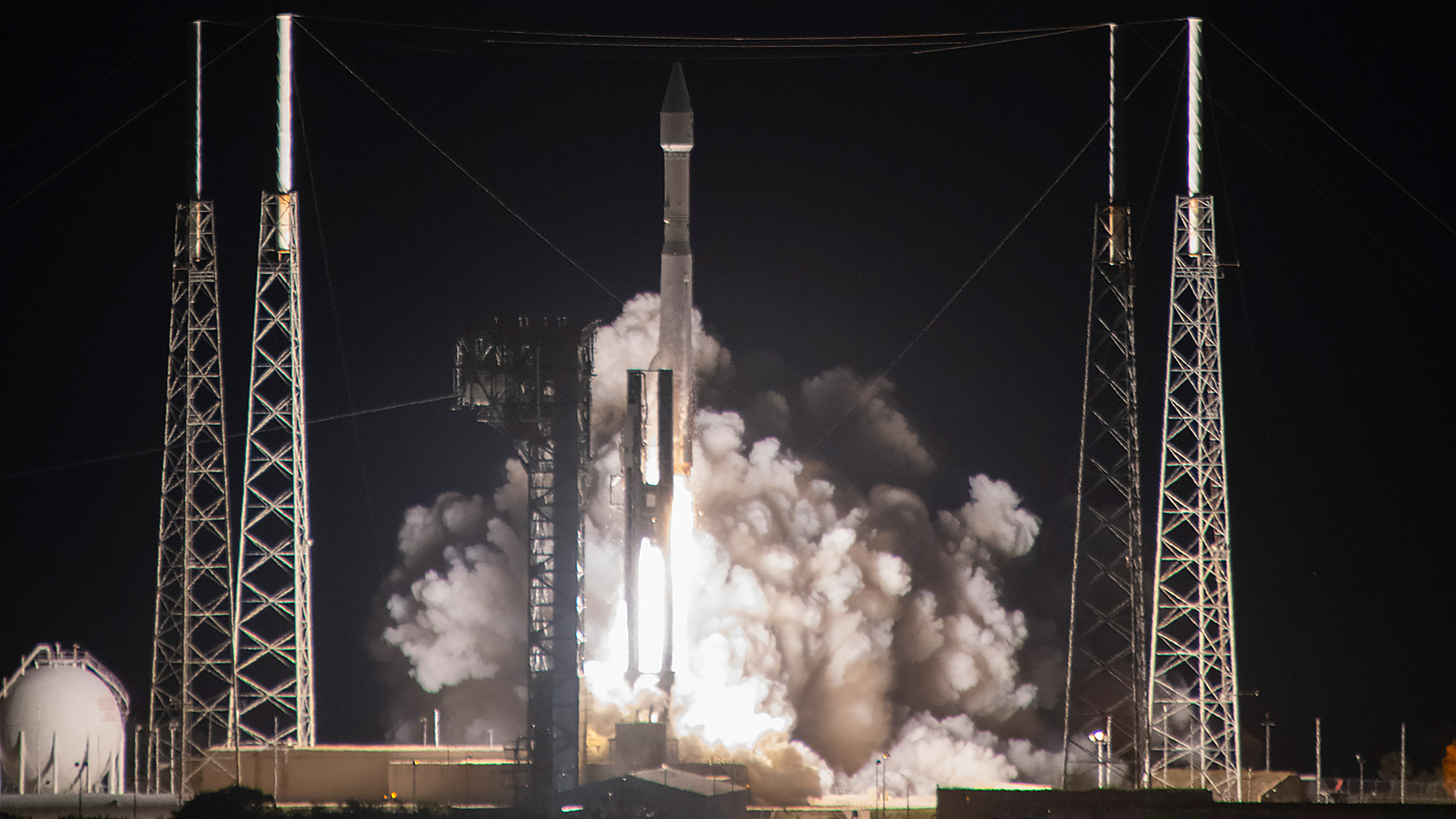
The European Space Agency's Solar Orbiter, a spacecraft designed to observe the sun in incredible, scorching detail, launched to our star on Feb. 9, 2020, on a mission to try and solve some solar mysteries.
The spacecraft will launch atop a United Launch Alliance (ULA) Atlas V rocket from Cape Canaveral Air Force Station in Florida at 11:03 p.m. EST (0403 GMT on Feb. 10).
Full story: Solar Orbiter launches on historic mission to study the sun's poles
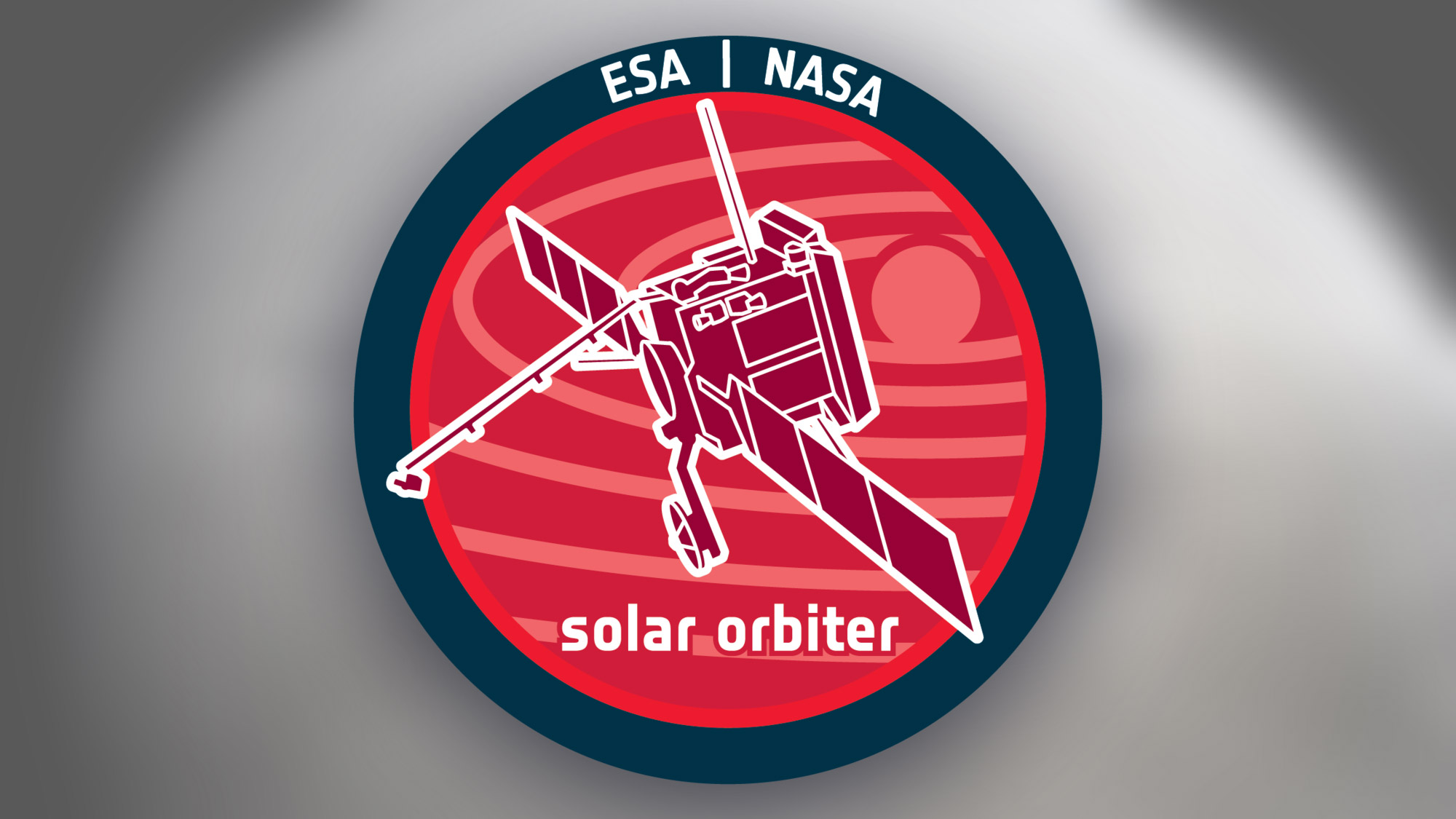
This is the mission patch for Solar Orbiter.
The $1.5 billion craft, which is a joint collaborative venture between NASA and the European Space Agency (ESA), will give scientists the first-ever good look at our sun's poles.
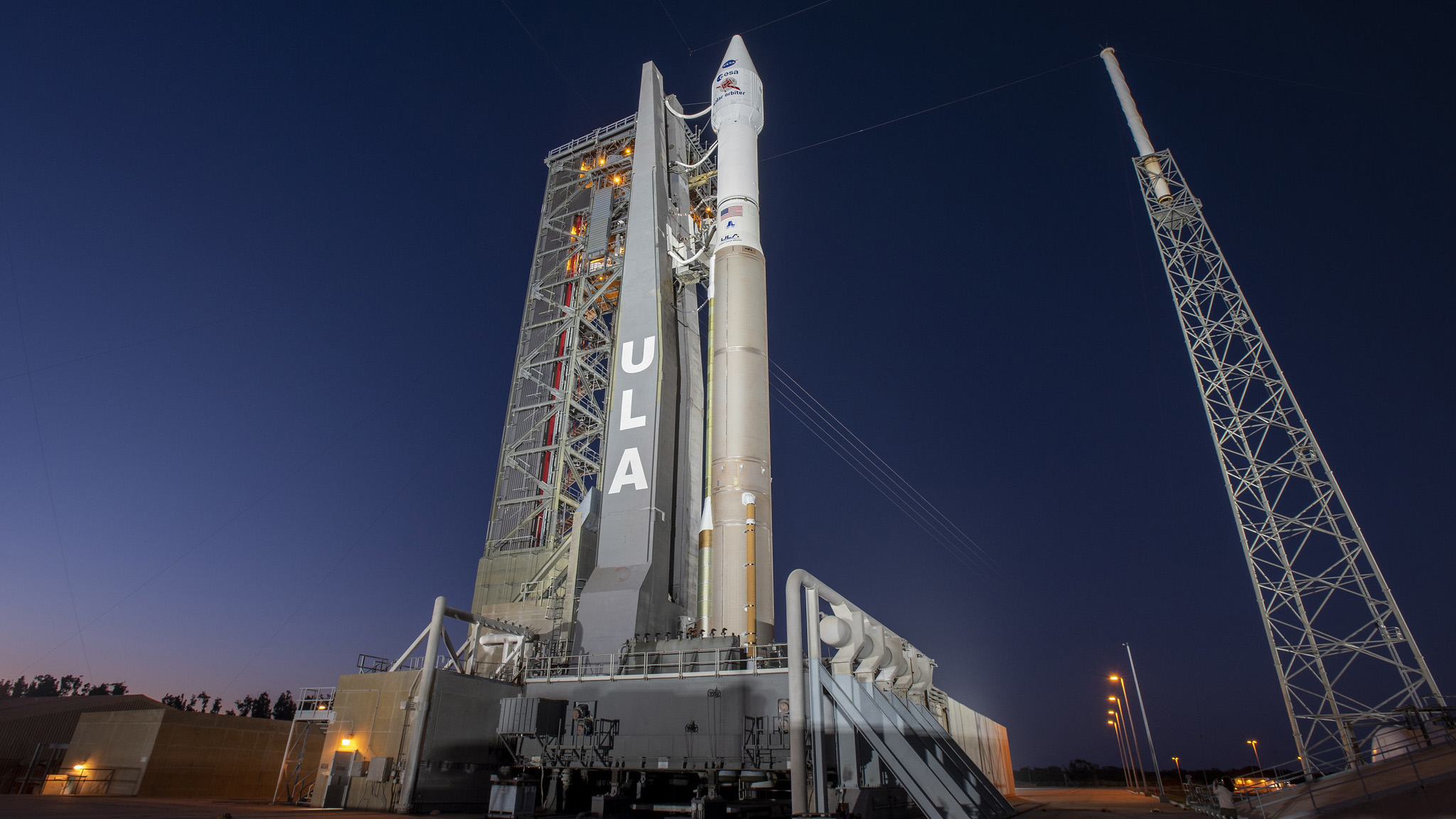
The United Launch Alliance Atlas V rocket and Solar Orbiter sit on Space Launch Complex 41 at Cape Canaveral at sunset, on Feb. 8, 2020.
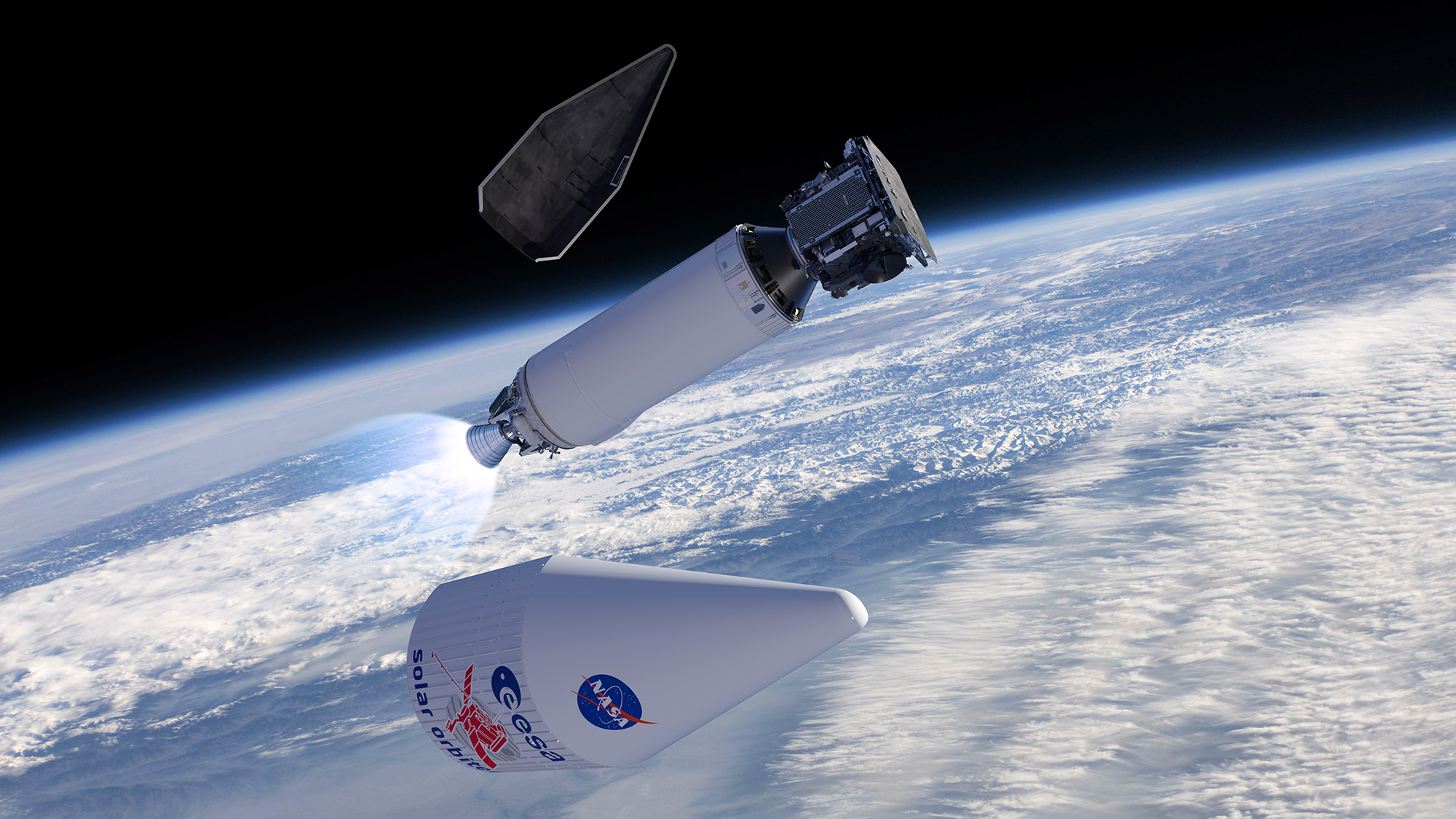
Scientists hope that these new observations will allow them to solve some long standing mysteries about the sun. The 3,970-lb. (1,800 kg) spacecraft will fly by Venus and Earth several times to swing into a unique orbit around the sun to make these observations.
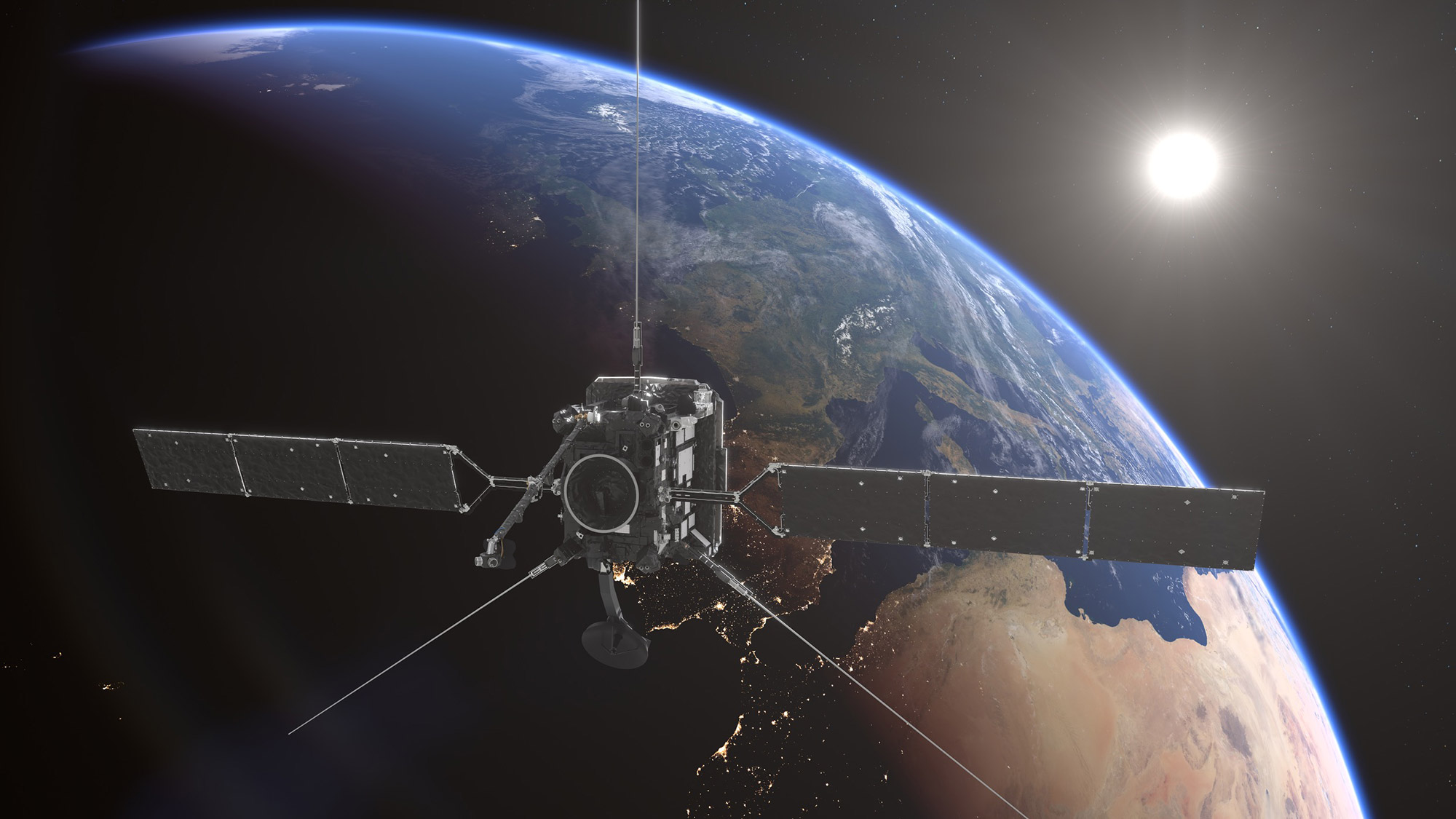
This illustration shows what Solar Orbiter might look like during its gravity assist flyby of Earth.
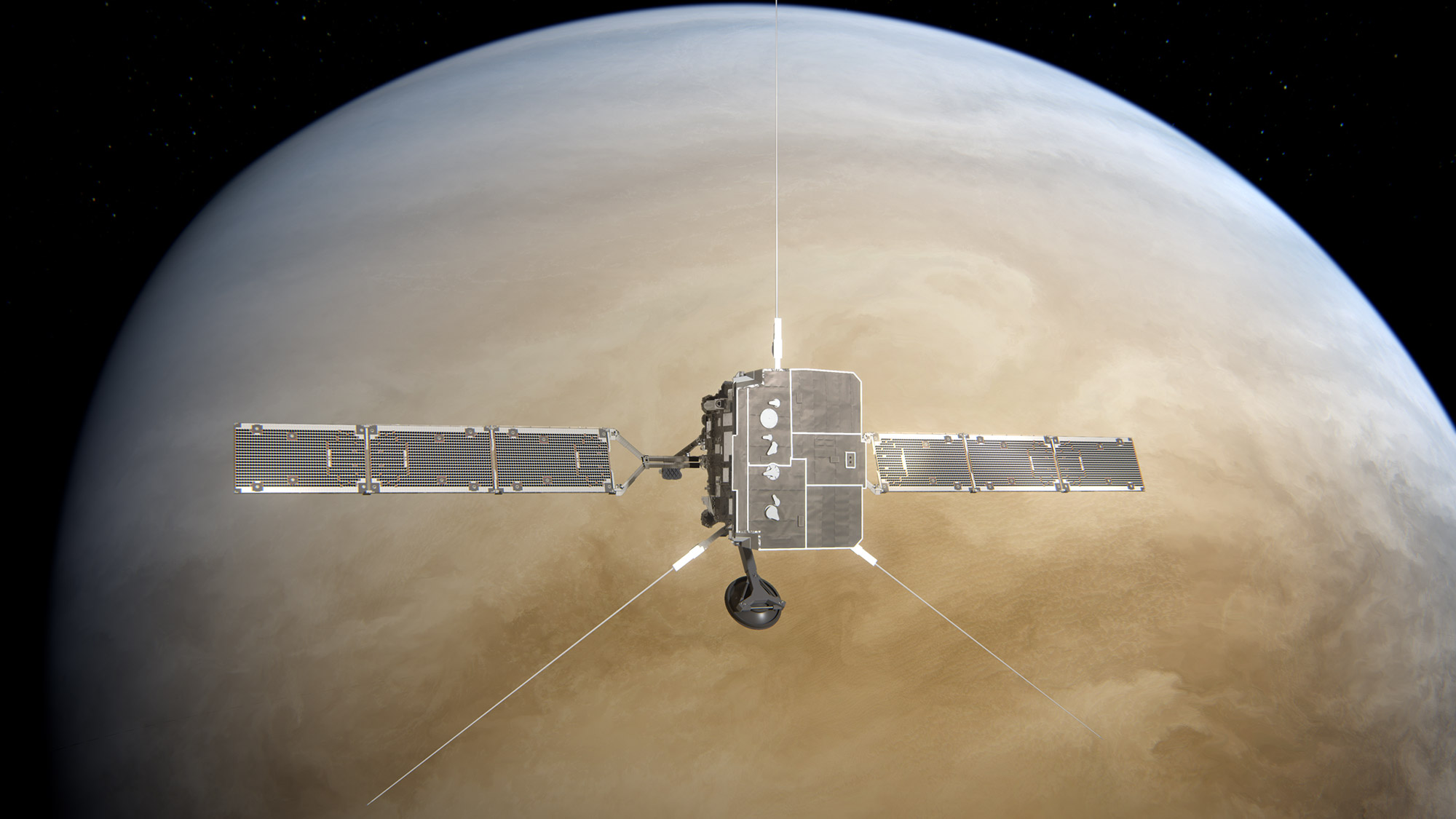
This illustration shows what Solar Orbiter might look like as it flies by Venus.
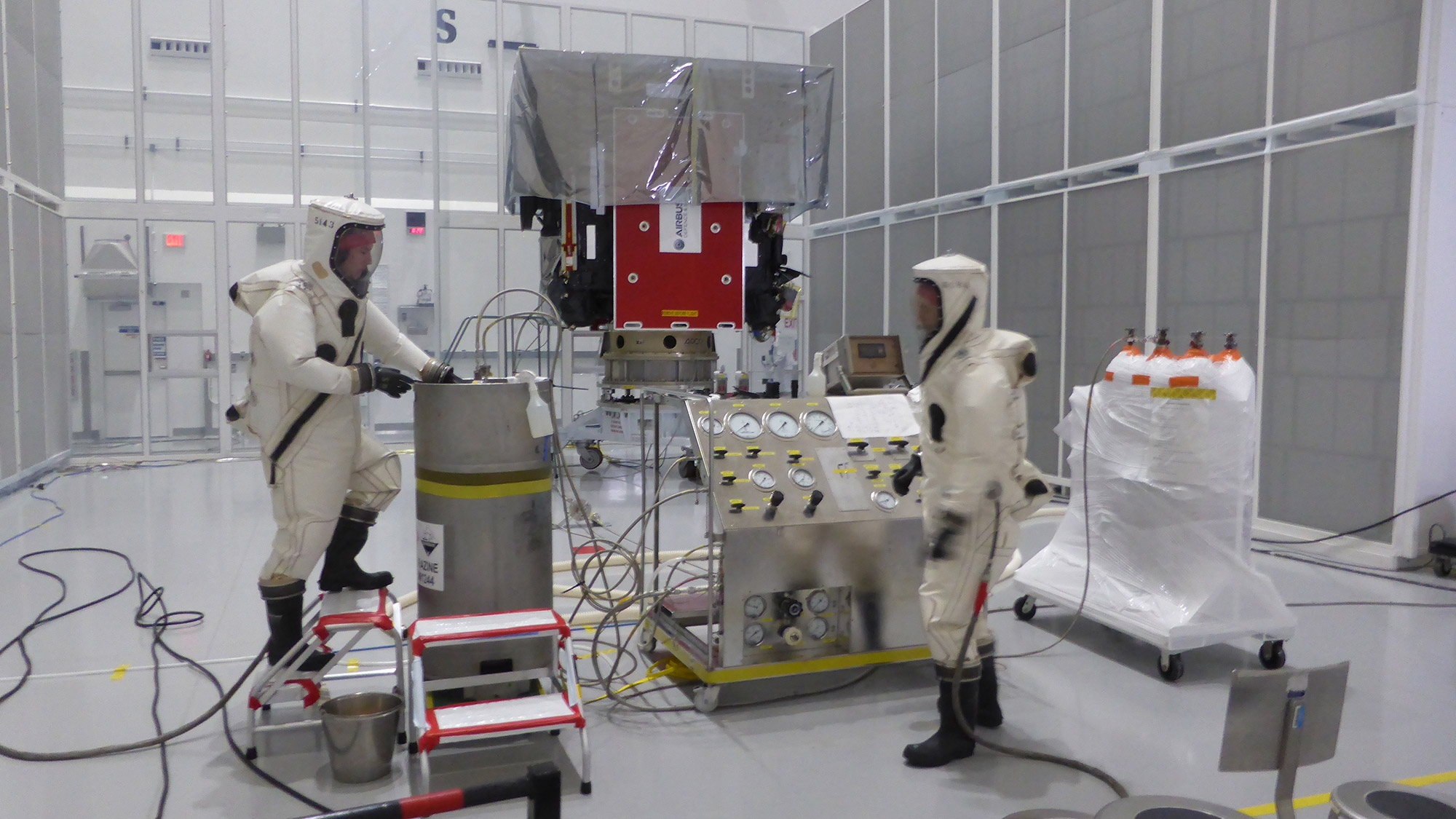
Solar Orbiter being loaded with propellants during processing activities inside the Astrotech Space Operations facility in Titusville, Florida.
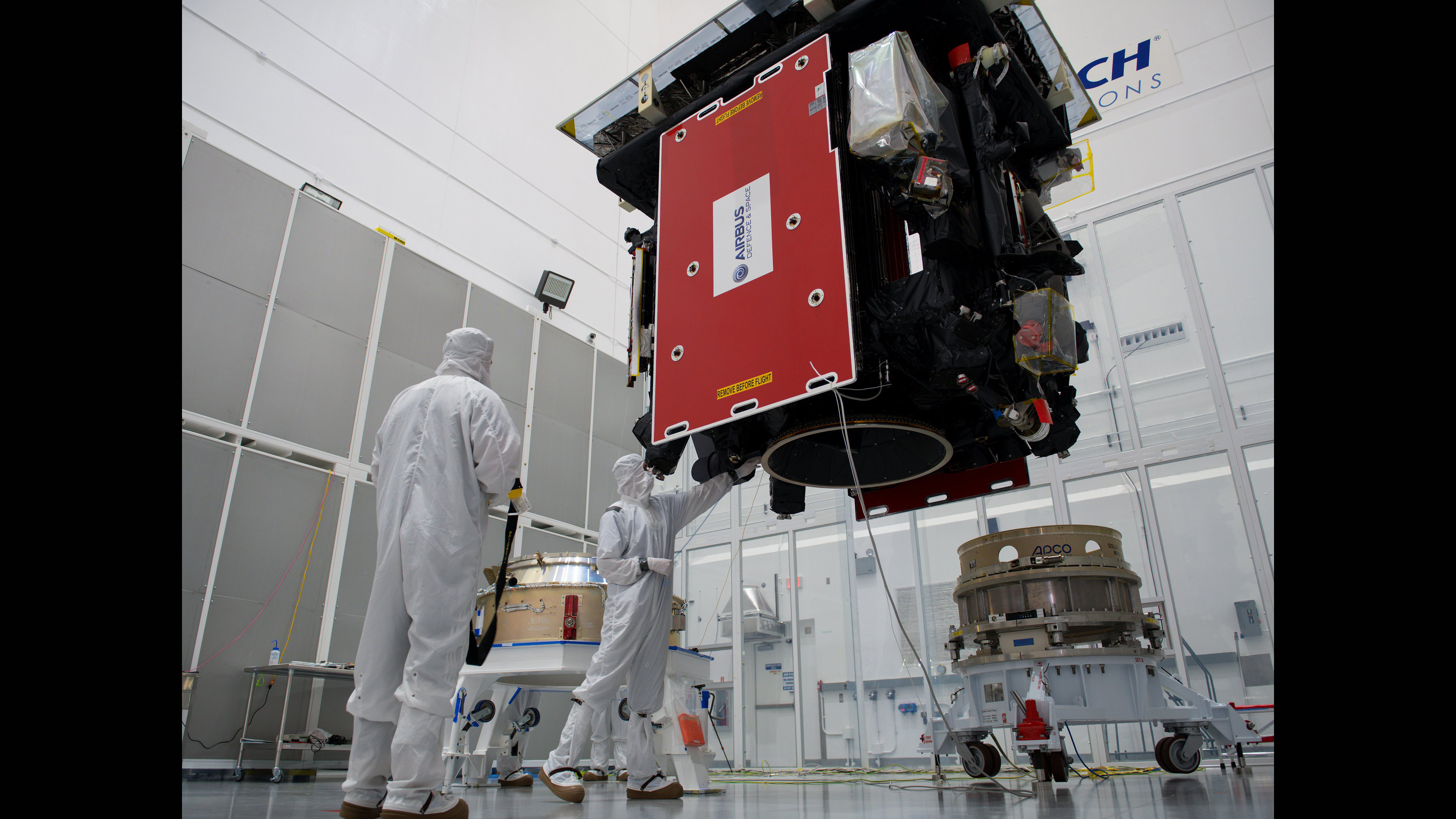
The fairing of the Atlas V rocket and the European Space Agency's Solar Orbiter spacecraft are pictured at the Astrotech payload processing facility near Kennedy Space Center in Florida during launch preparations, on Jan. 21, 2020.
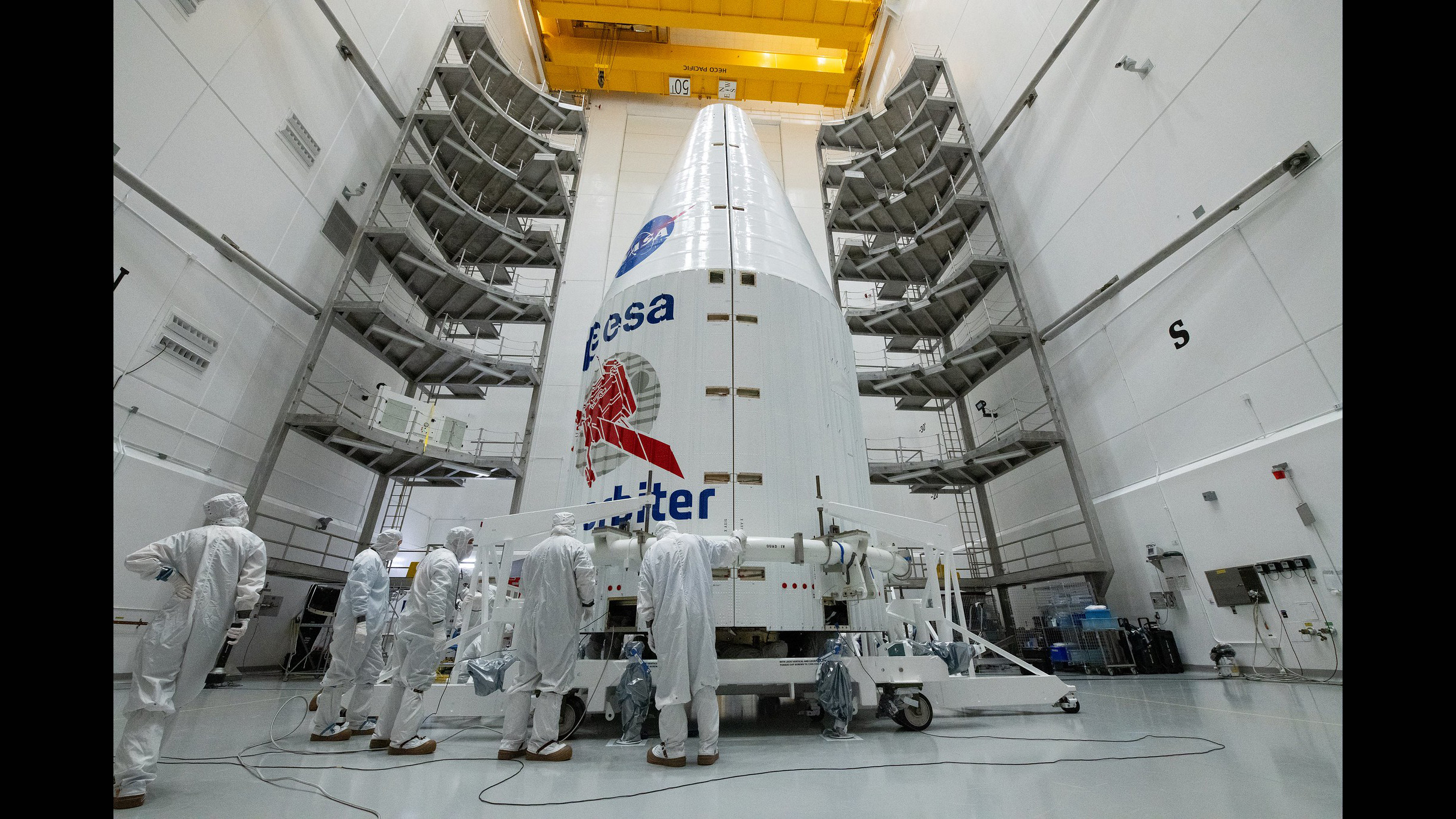
The fairing of the US Atlas V 411 rocket with the European Space Agency's Solar Orbiter spacecraft inside at the Astrotech payload processing facility near Kennedy Space Center in Florida during launch preparations, on Jan. 21, 2020.
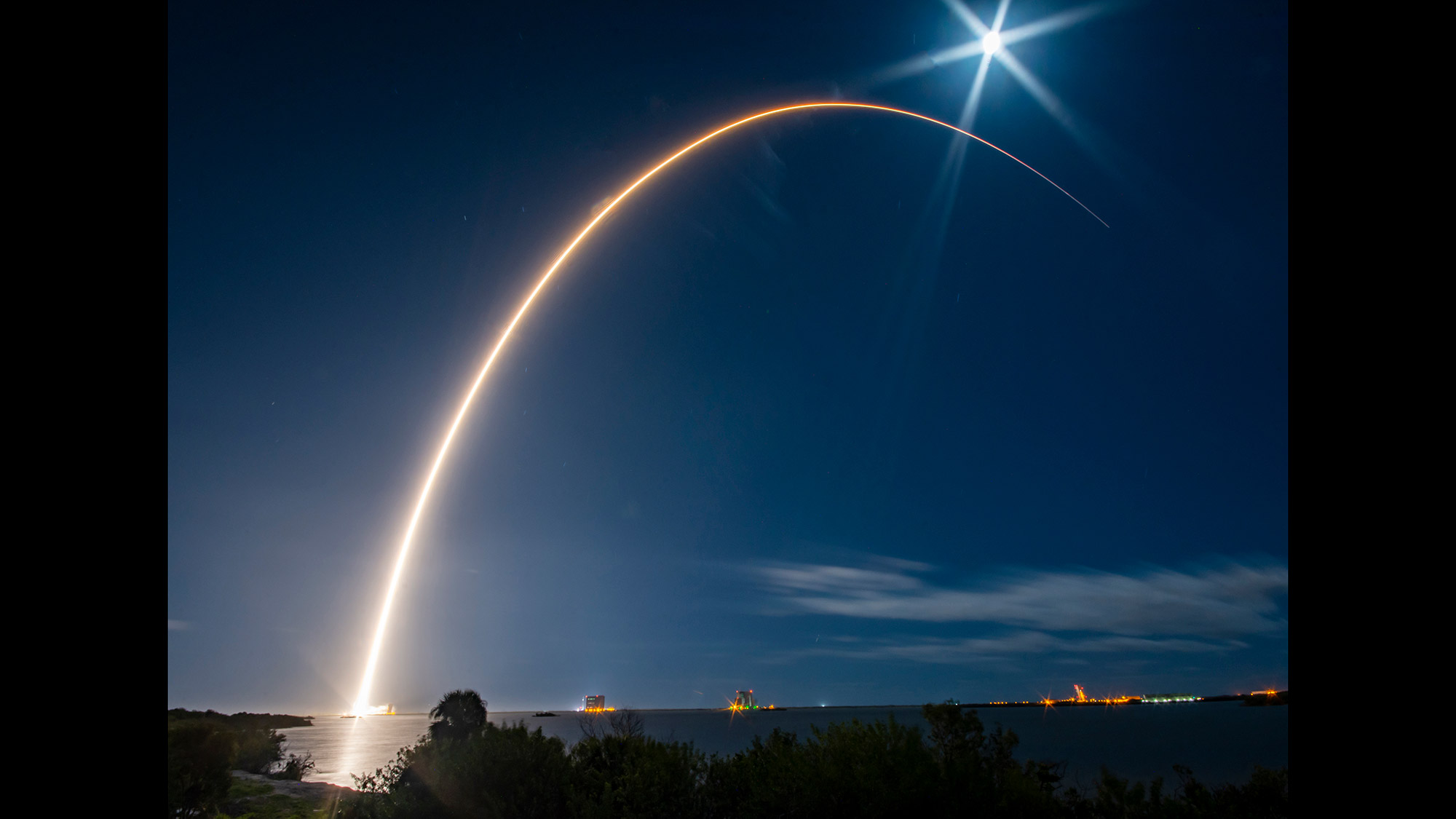
The European Space Agency's Solar Orbiter launches atop a United Launch Alliance Atlas V rocket from NASA's Kennedy Space Center in Florida on Feb. 9, 2020, at 11:03 p.m. EST (0403 GMT on Feb. 10).
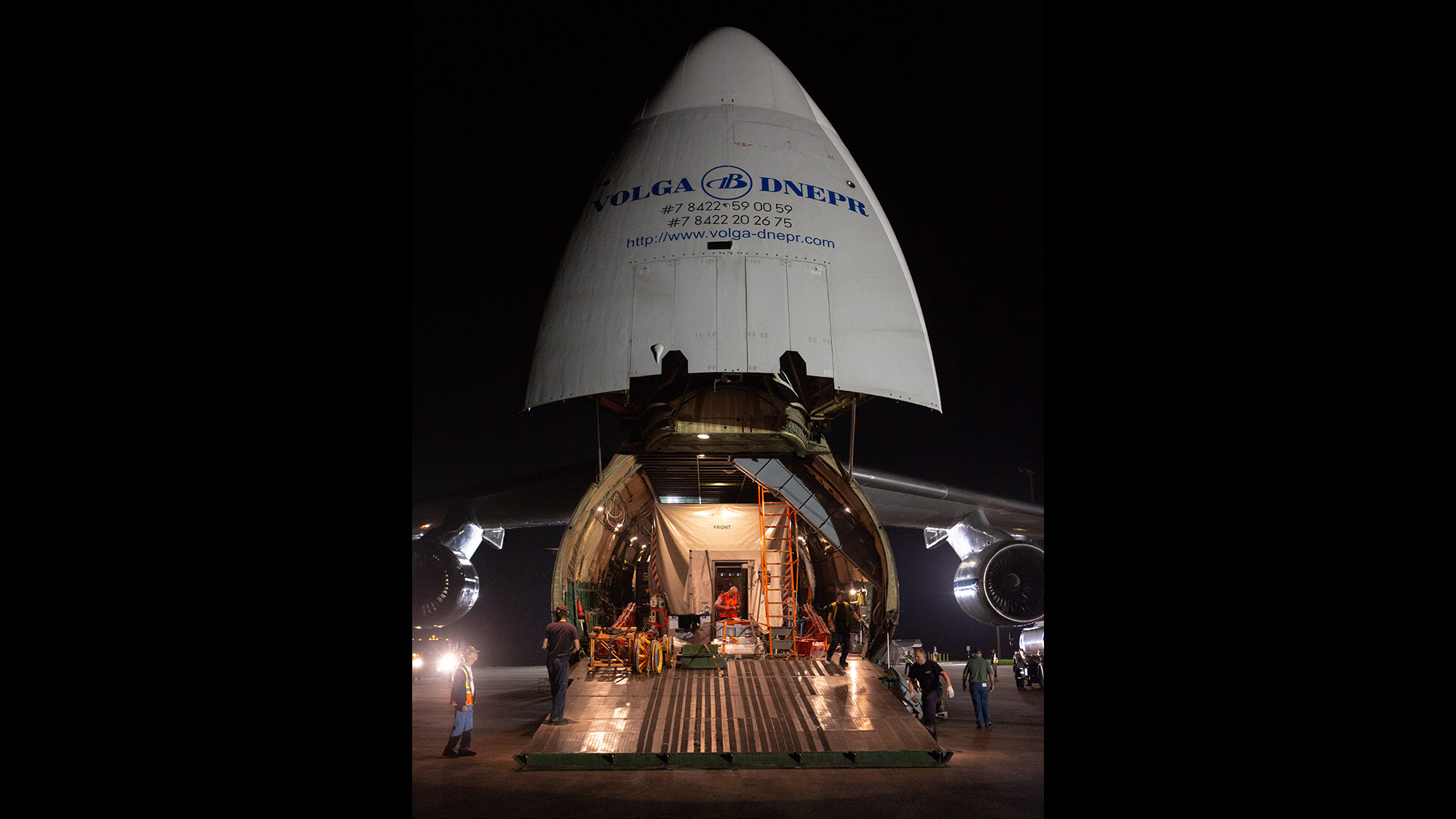
Solar Orbiter arrived aboard an Antonov An-124 cargo plane at NASA Kennedy Space Center’s Launch and Landing Facility on Nov. 1, 2019.
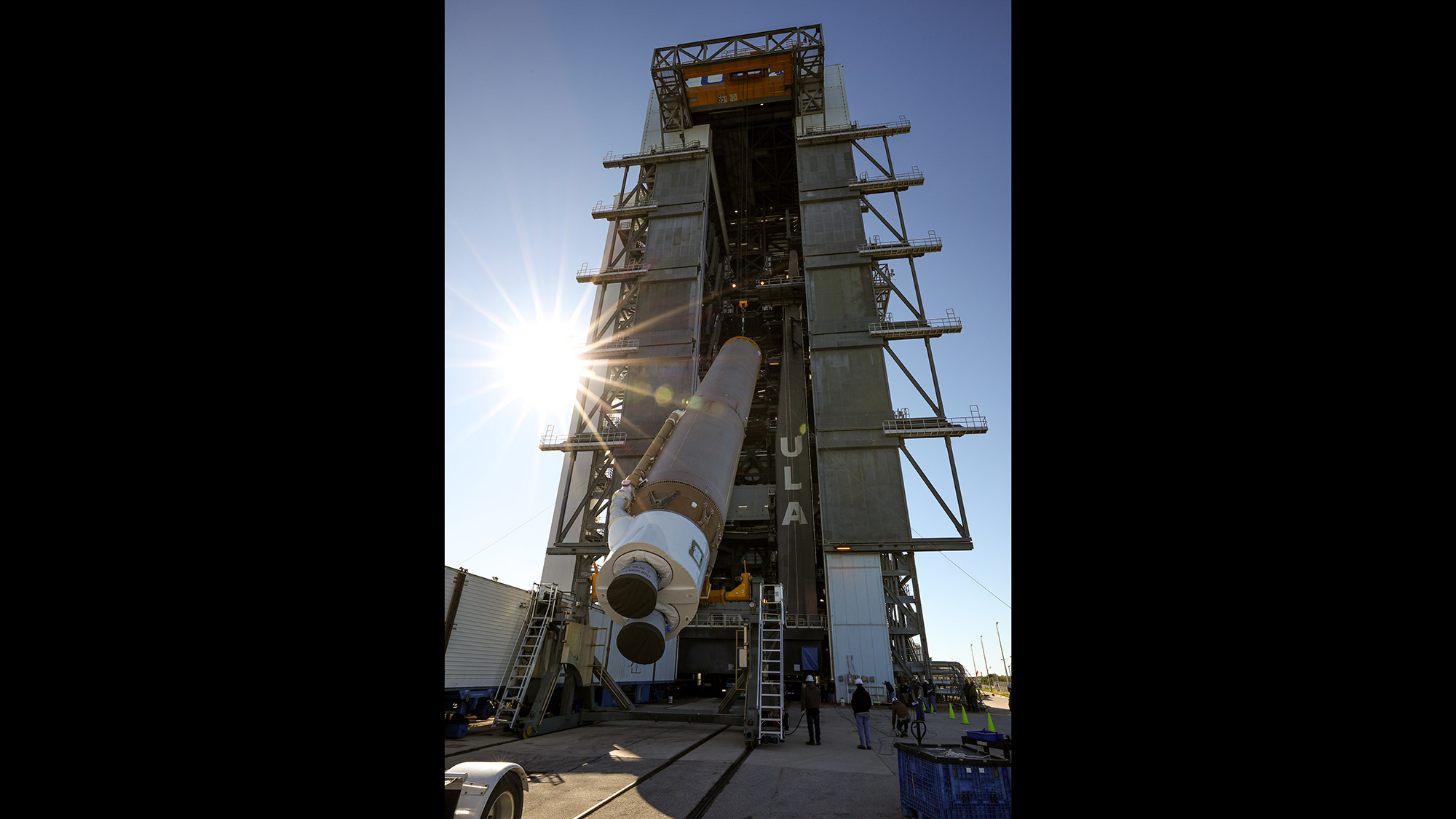
The booster of a United Launch Alliance Atlas V rocket which will launch the Solar Orbiter spacecraft on Feb. 9, 2020.
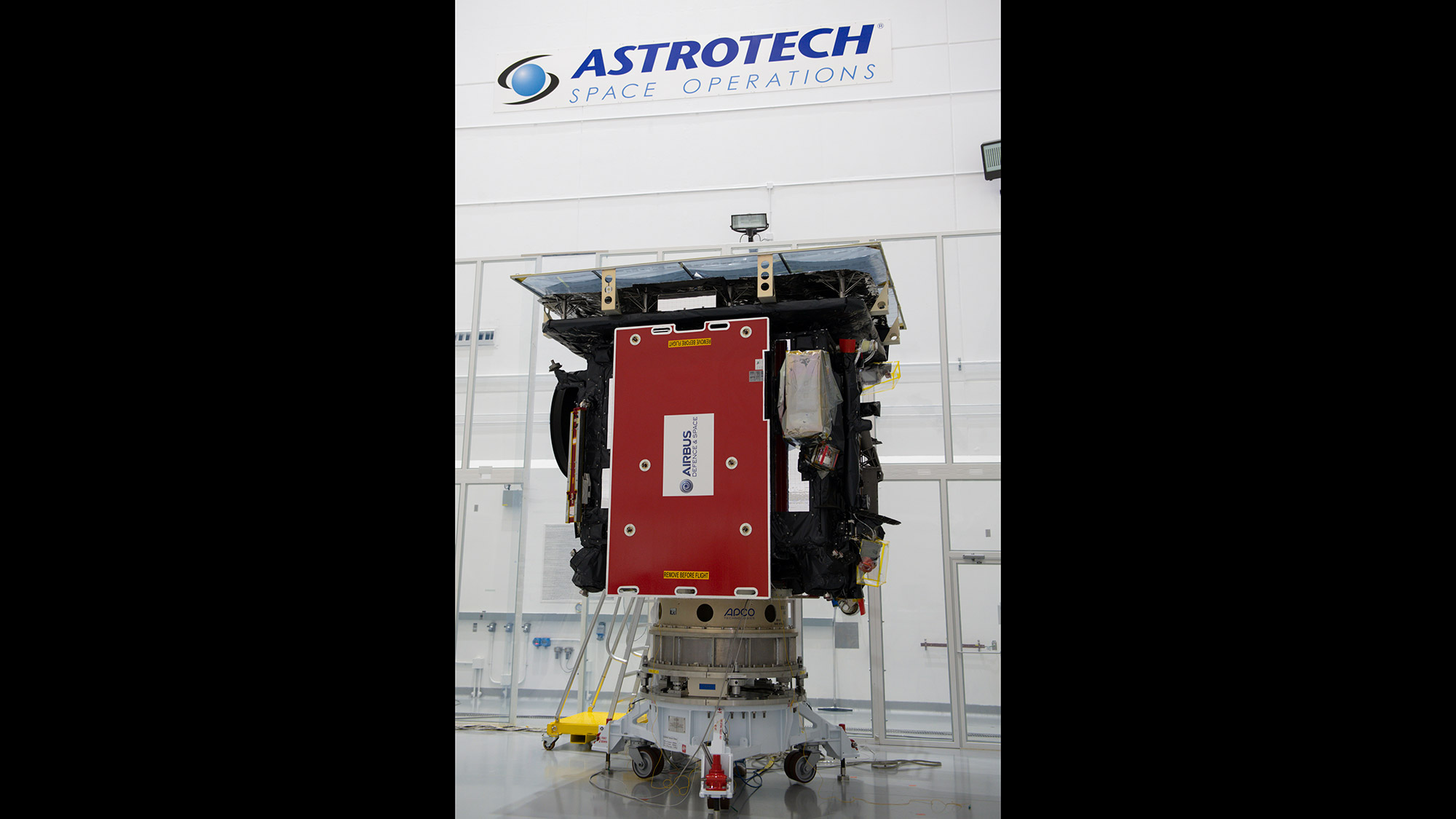
Solar Orbiter is on a work stand for processing inside Astrotech Space Operations in Titusville, Florida on Jan. 16, 2020.
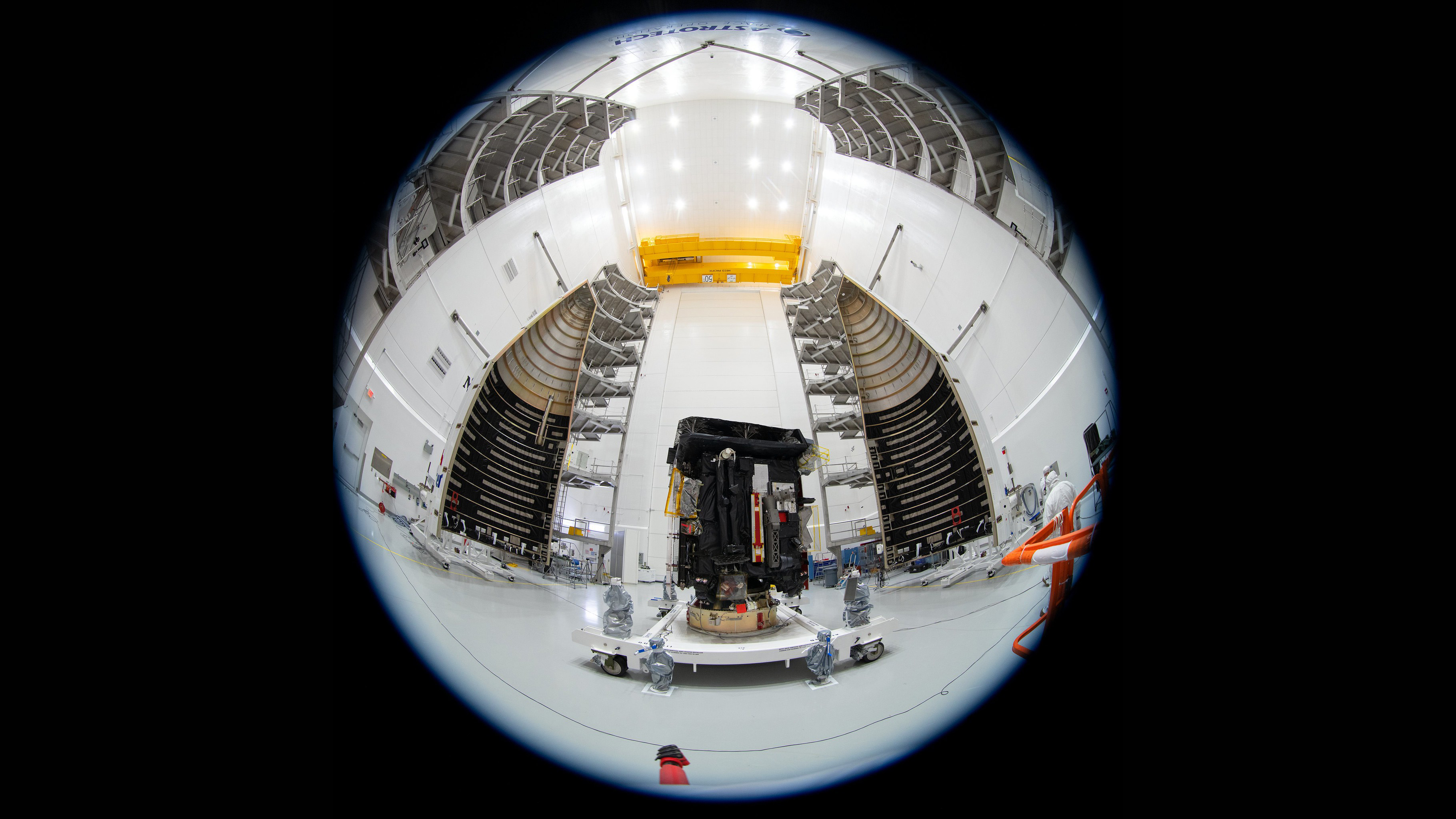
The fairing of the Atlas V rocket and the European Space Agency's Solar Orbiter spacecraft are pictured at the Astrotech payload processing facility near Kennedy Space Center in Florida during launch preparations, on Jan. 21, 2020.
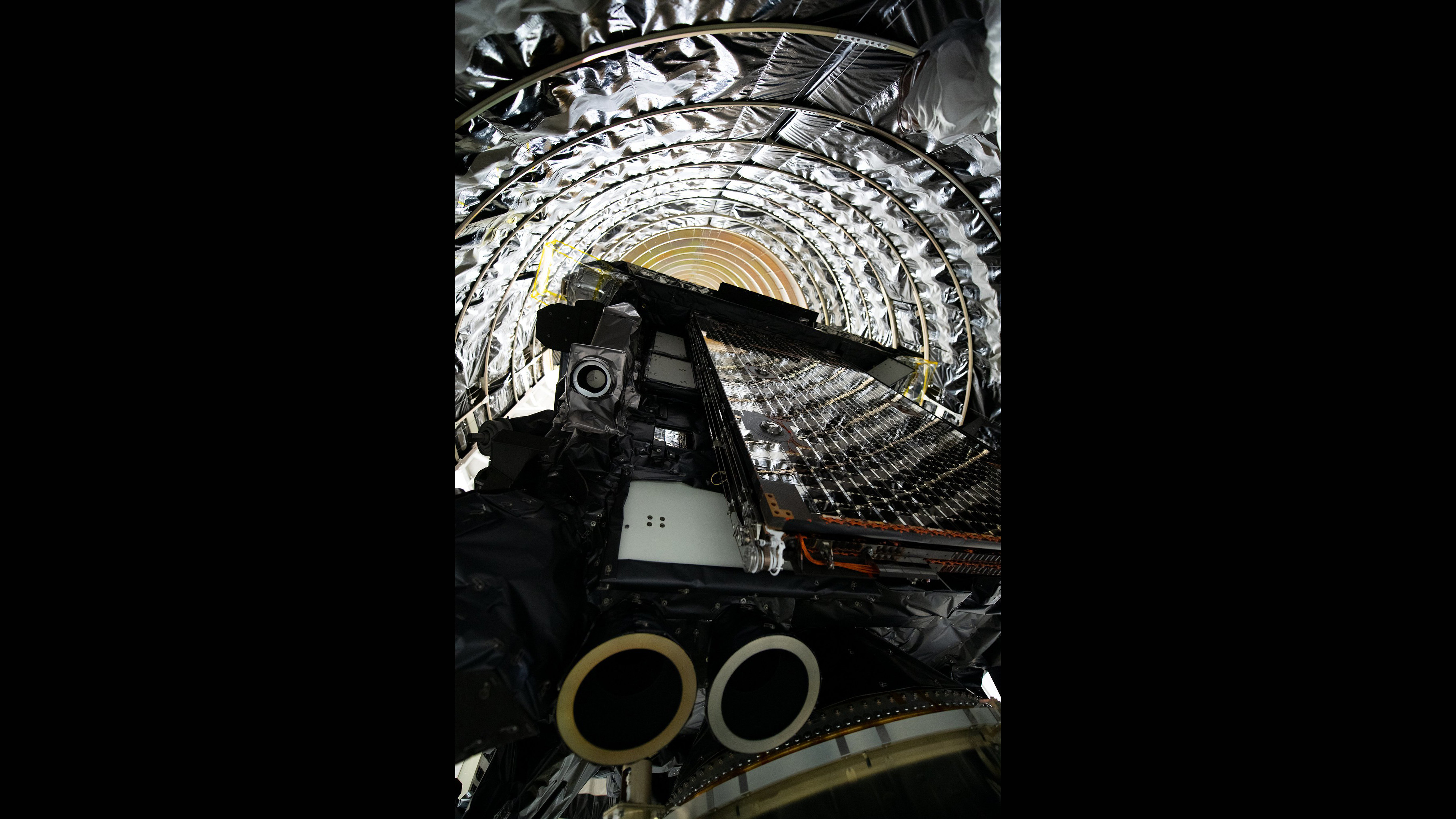
The fairing of the United Launch Alliance Atlas V 411 rocket with the European Space Agency's Solar Orbiter spacecraft inside at the Astrotech payload processing facility near Kennedy Space Center in Florida during launch preparations, on Jan. 21, 2020.
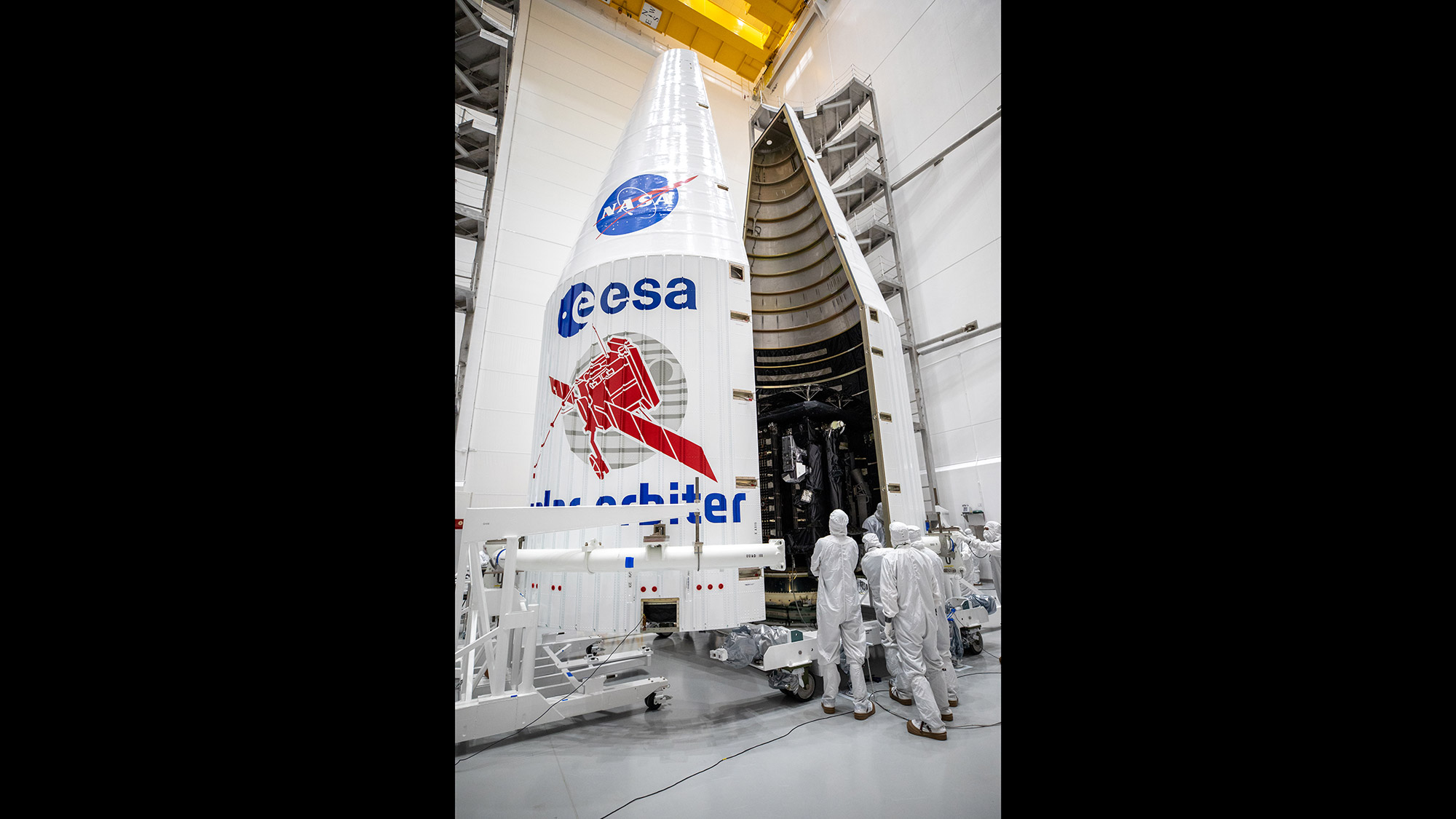
Both halves of a United Launch Alliance Atlas V payload fairing are joined around Solar Orbiter in the Astrotech Space Operations facility in Titusville, Florida, on Jan. 20, 2020.
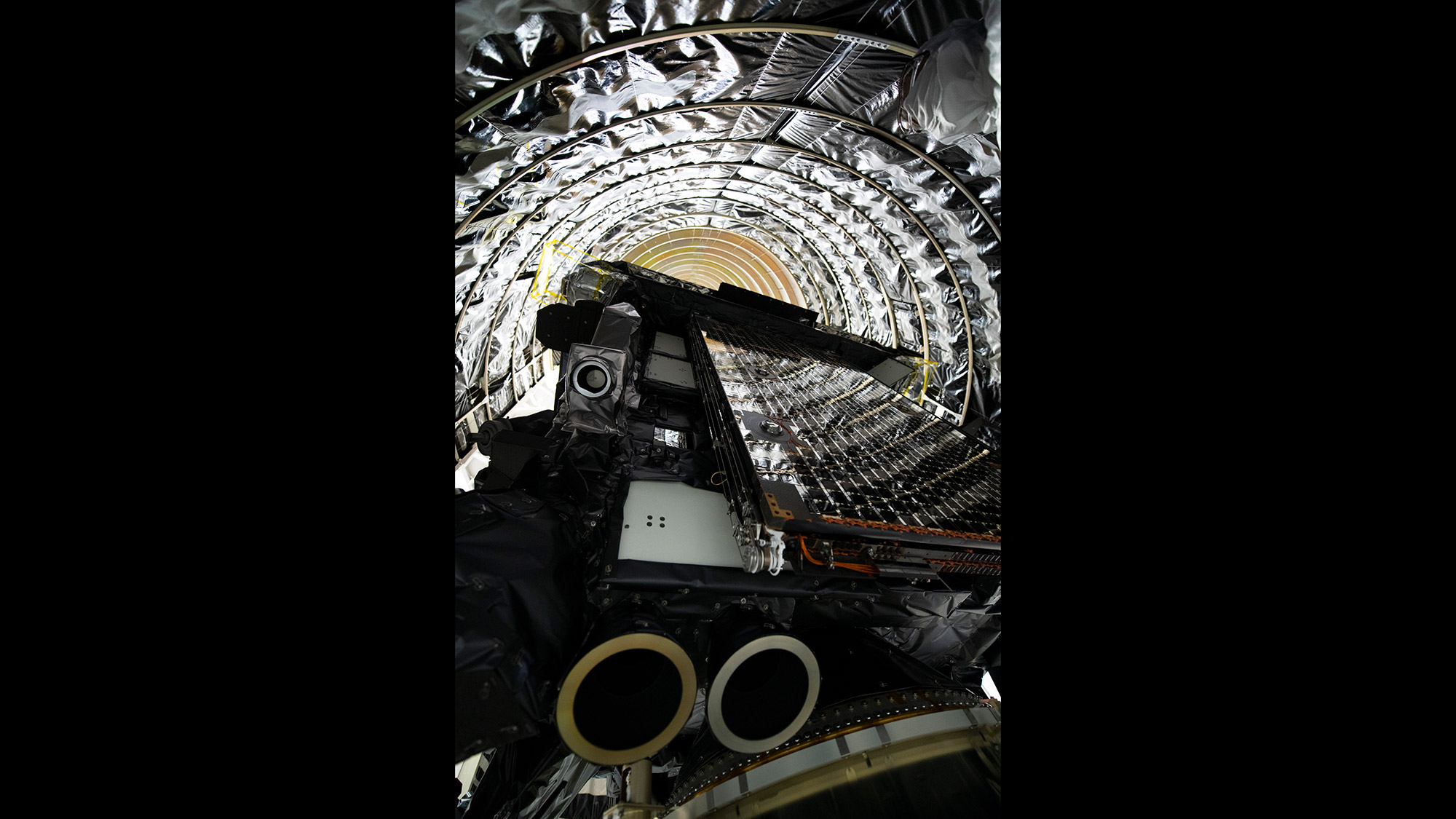
A peek inside inside of the United Launch Alliance payload fairing as it's being put around Solar Orbiter on Jan. 20, 2020.
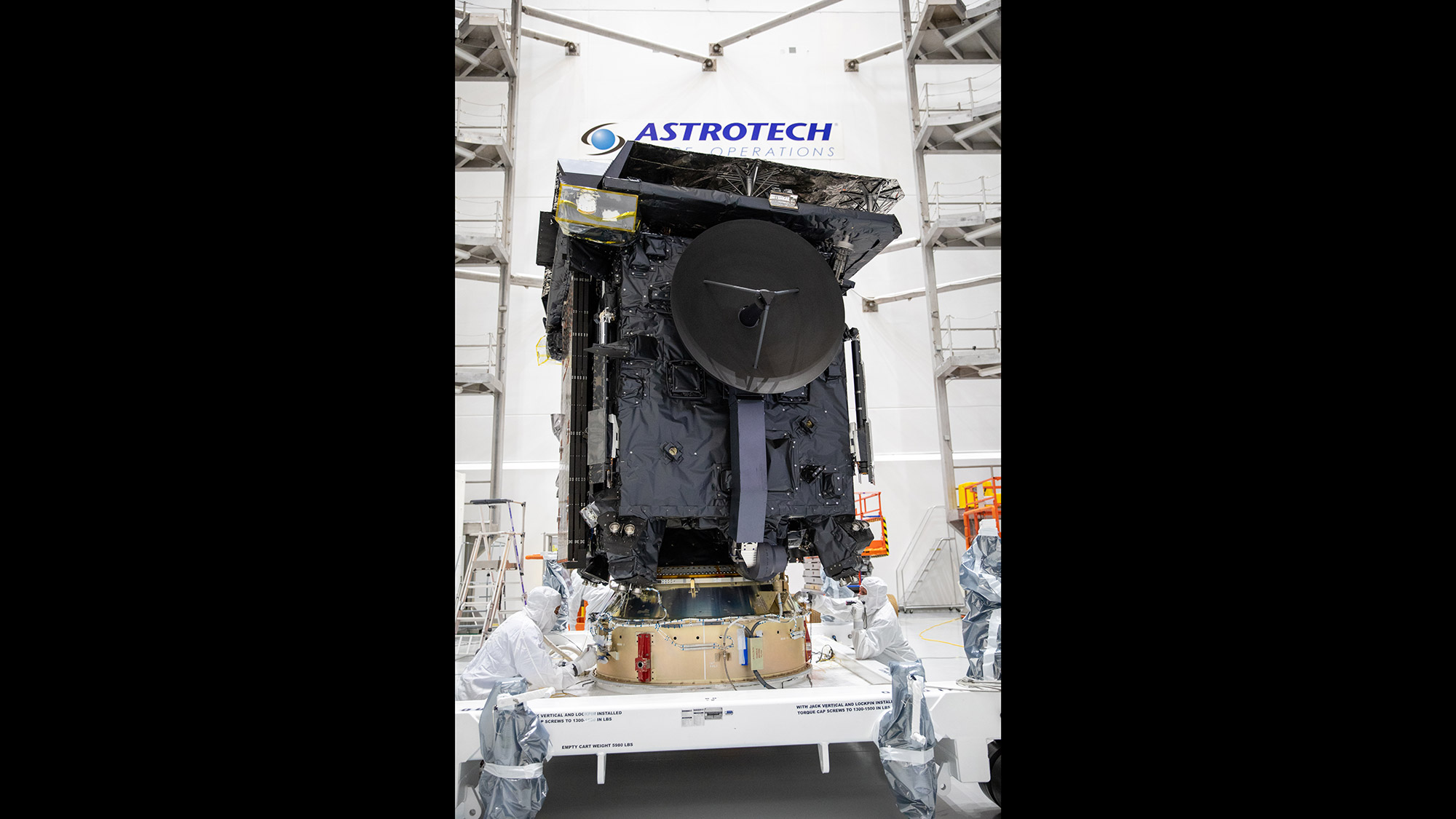
Solar Orbiter prepares for encapsulation in the United Launch Alliance Atlas V payload fairing inside the Astrotech Space Operations facility in Titusville, Florida, on Jan. 20, 2020.
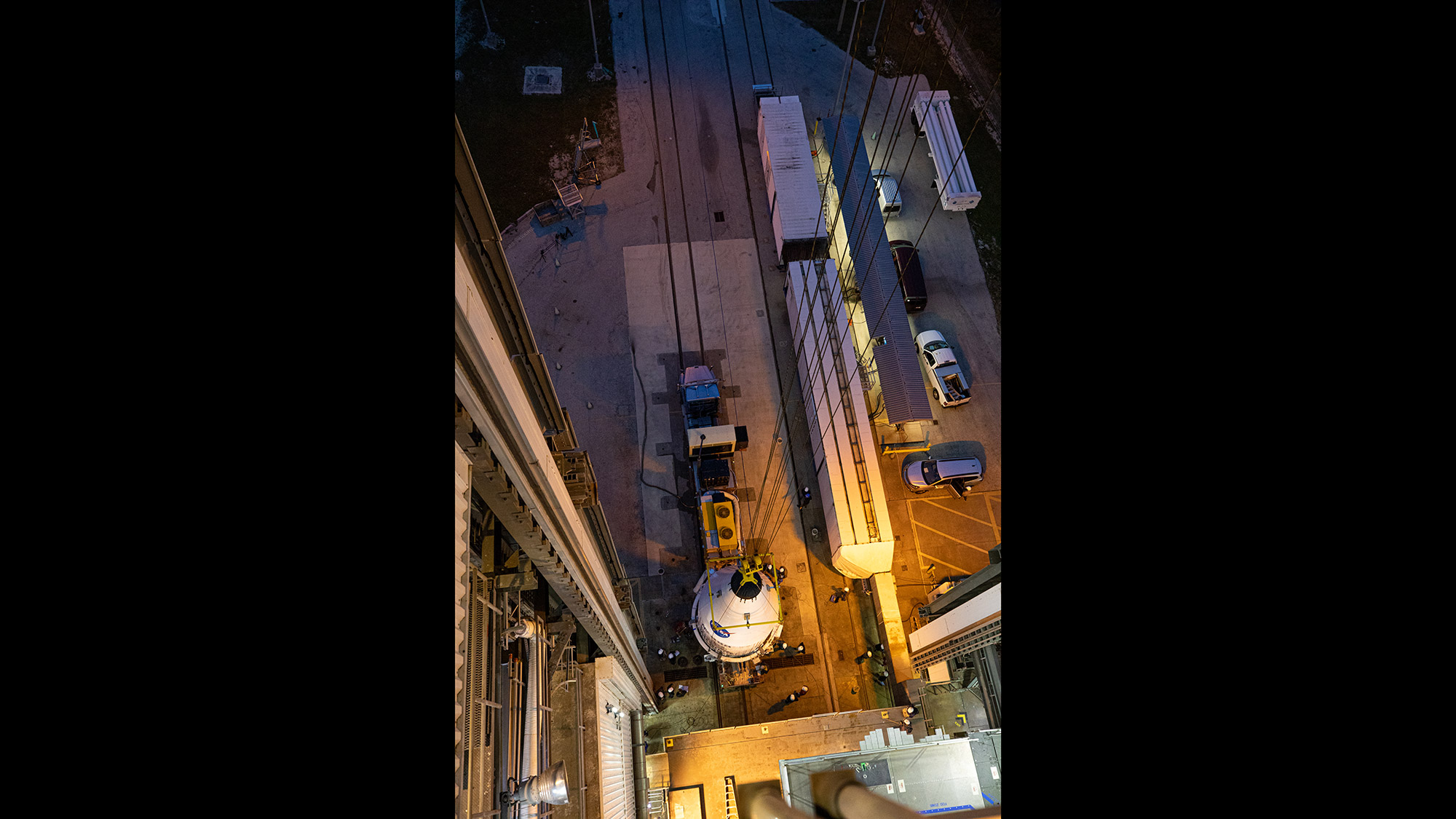
From above, you can see the United Launch Alliance Atlas V payload fairing, containing the Solar Orbiter spacecraft, is hoisted up by crane at the Vertical Integration Facility at Space Launch Complex 41 on Cape Canaveral Air Force Station in Florida on Jan. 31, 2020.
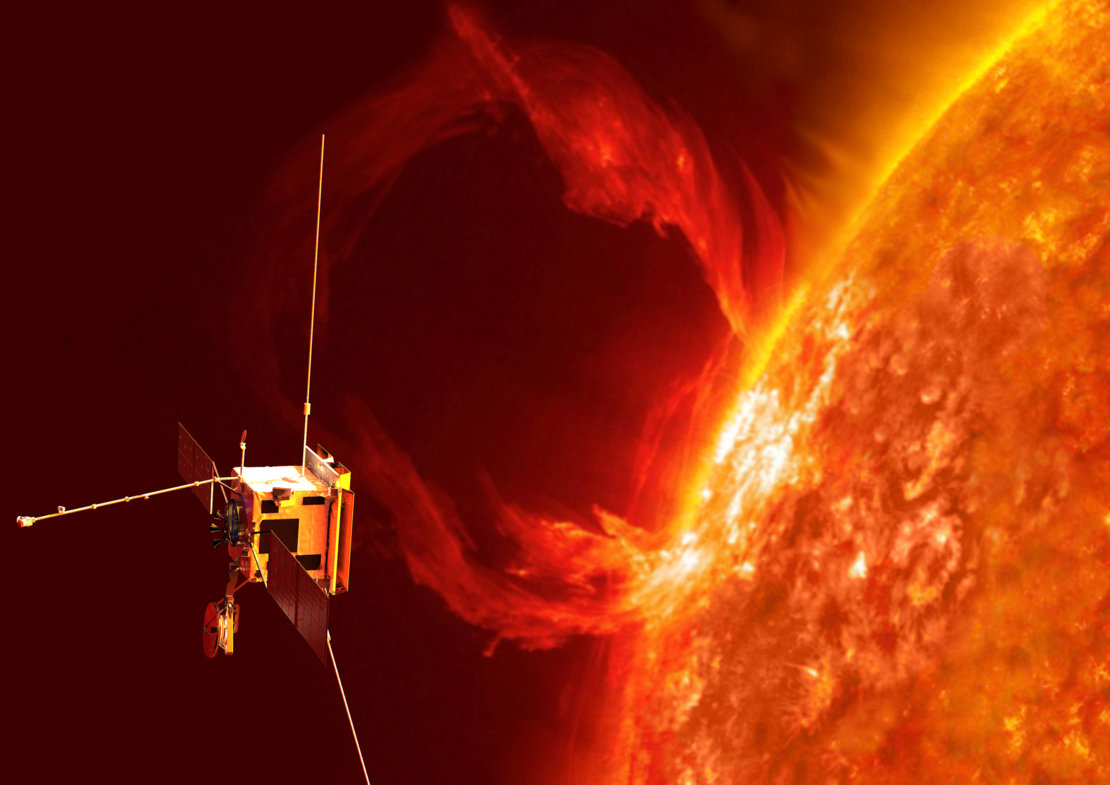
An artist's illustration of the ESA-NASA Solar Orbiter spacecraft's mission to study the sun's polar regions.
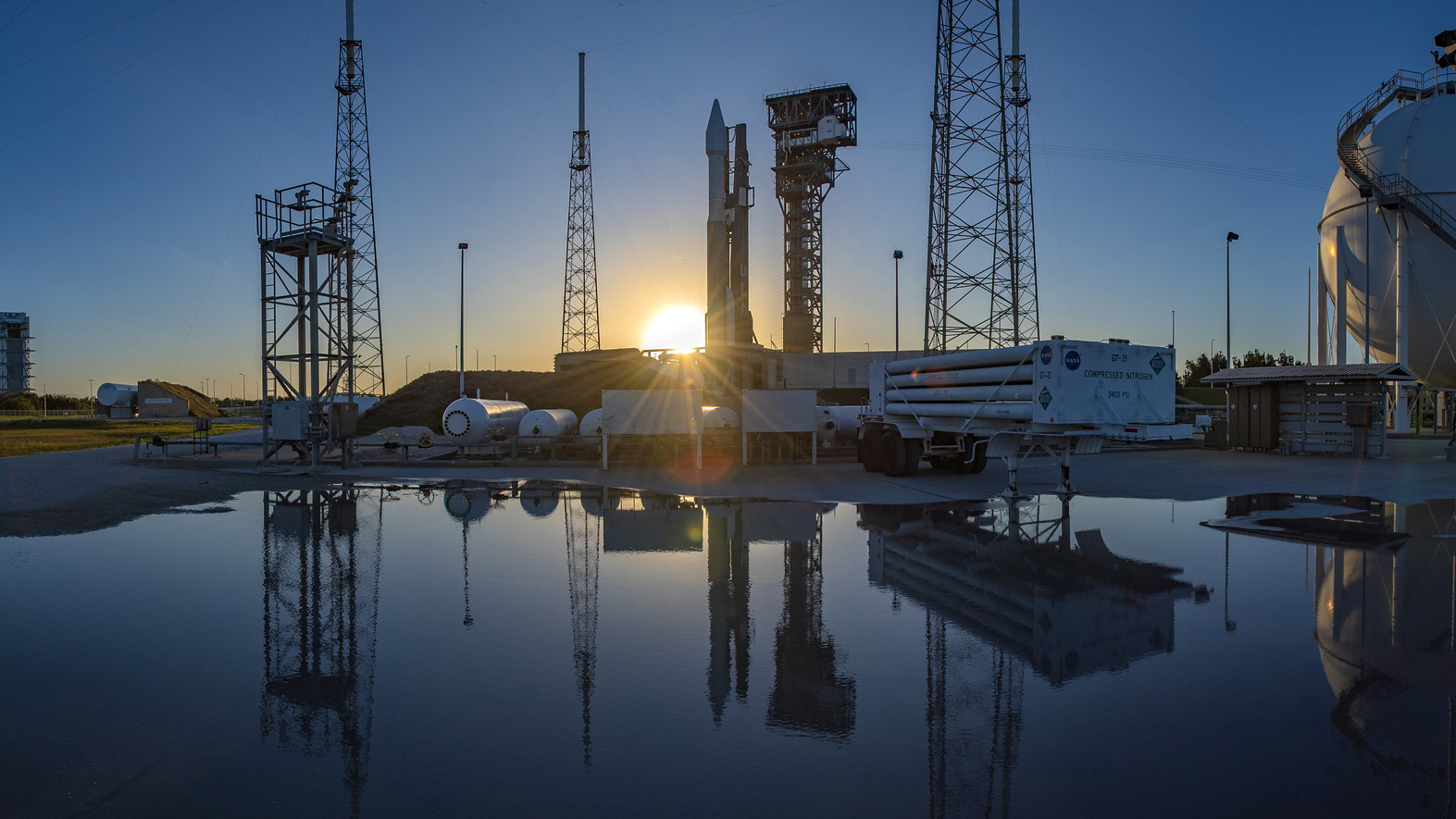
The United Launch Alliance (ULA) Atlas V rocket and Solar Orbiter stand ready for launch on Space Launch Complex 41 at Cape Canaveral at sunset, on Feb. 8, 2020.
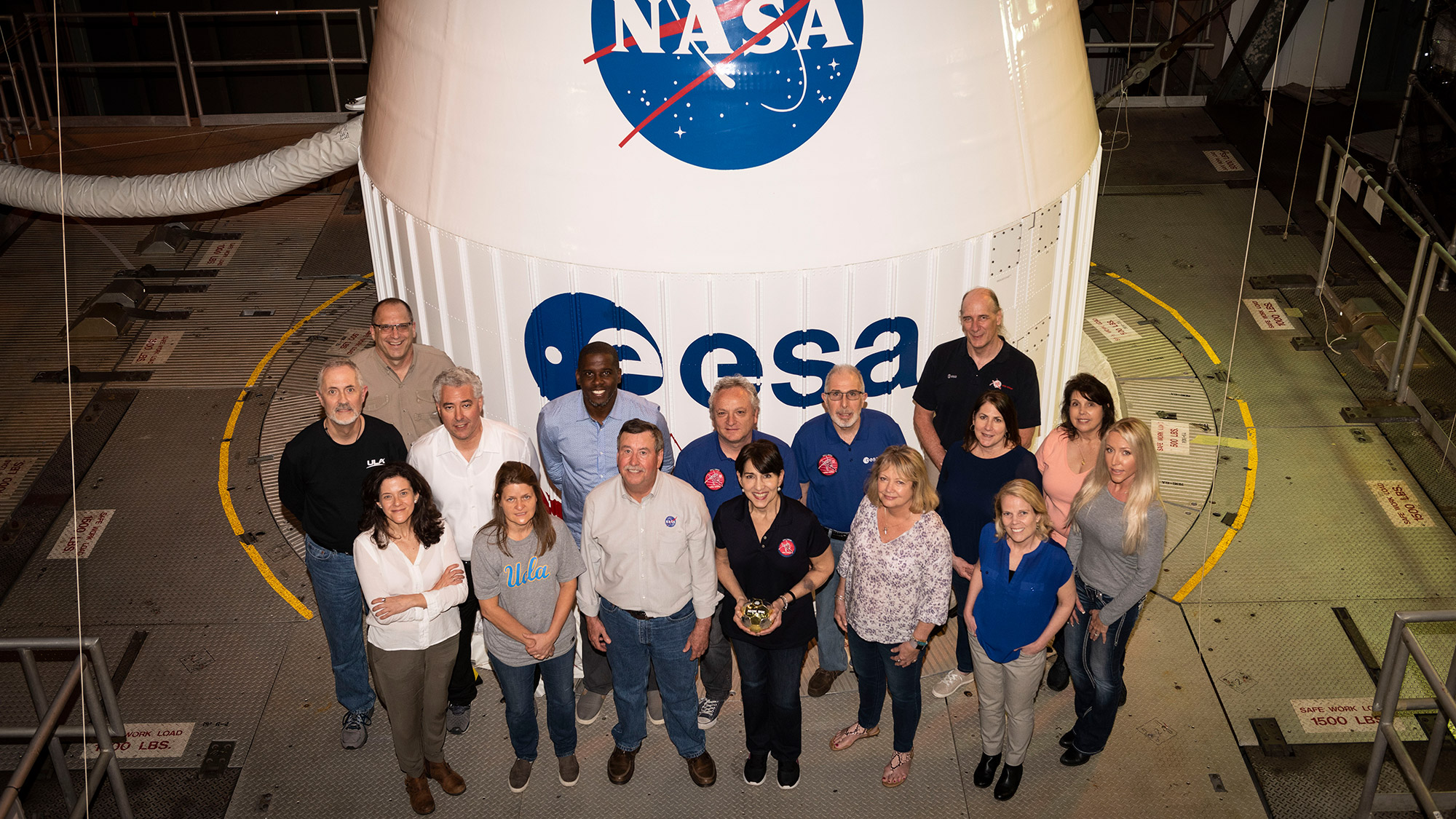
Members of the Goddard Space Flight Center Solar Orbiter Collaboration Project Office, along with Launch Services Program’s (LSP) Jim Behling (back left), launch site integration manager, pose in front of the Solar Orbiter spacecraft inside the Vertical Integration Facility at Cape Canaveral Air Force Station’s Space Launch Complex 41 in Florida.
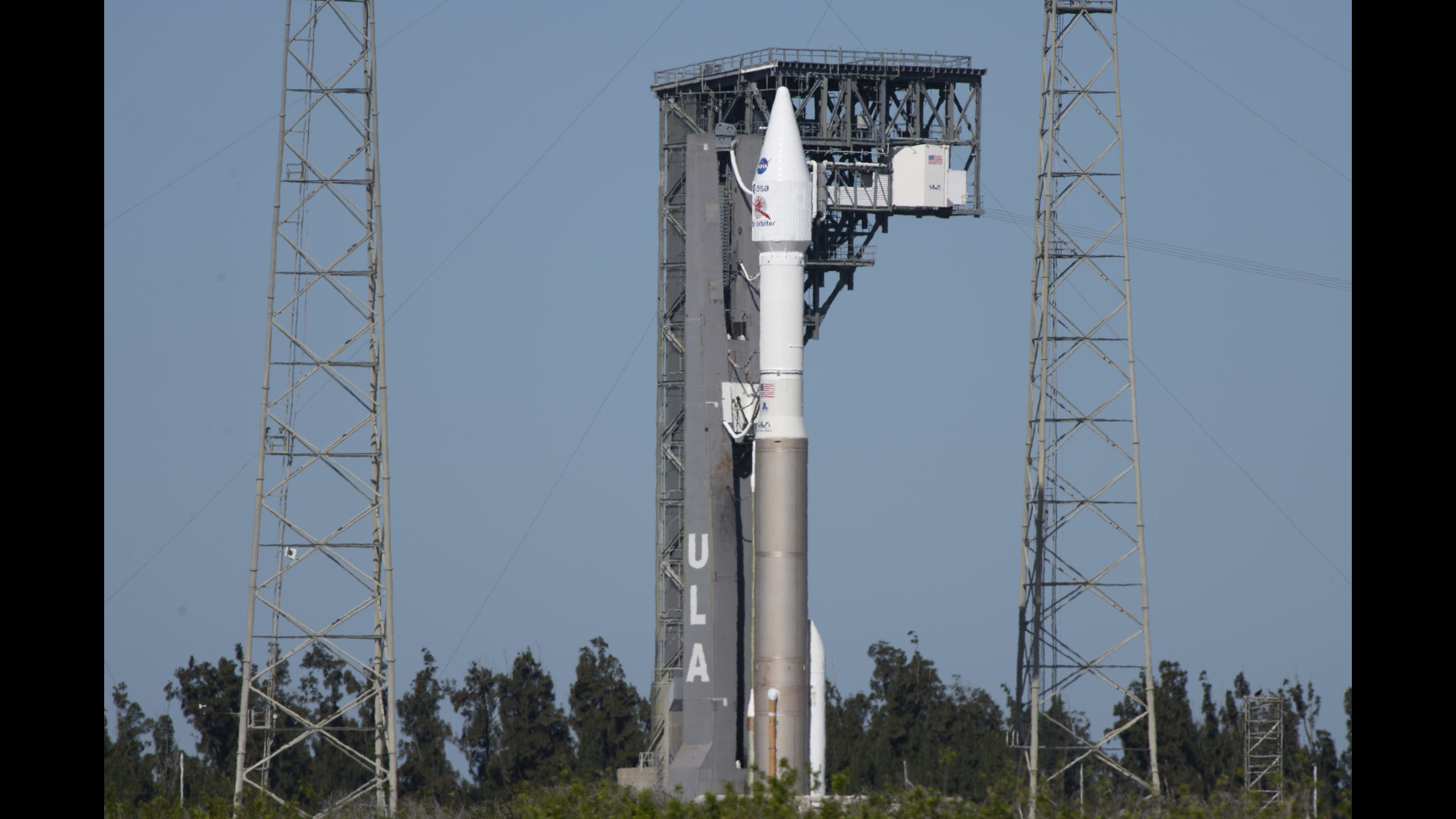
The United Launch Alliance Atlas V 411 rocket with the European Space Agency's Solar Orbiter spacecraft inside rolled out ahead of launch at Kennedy Space Center in Florida on Feb. 8, 2020.
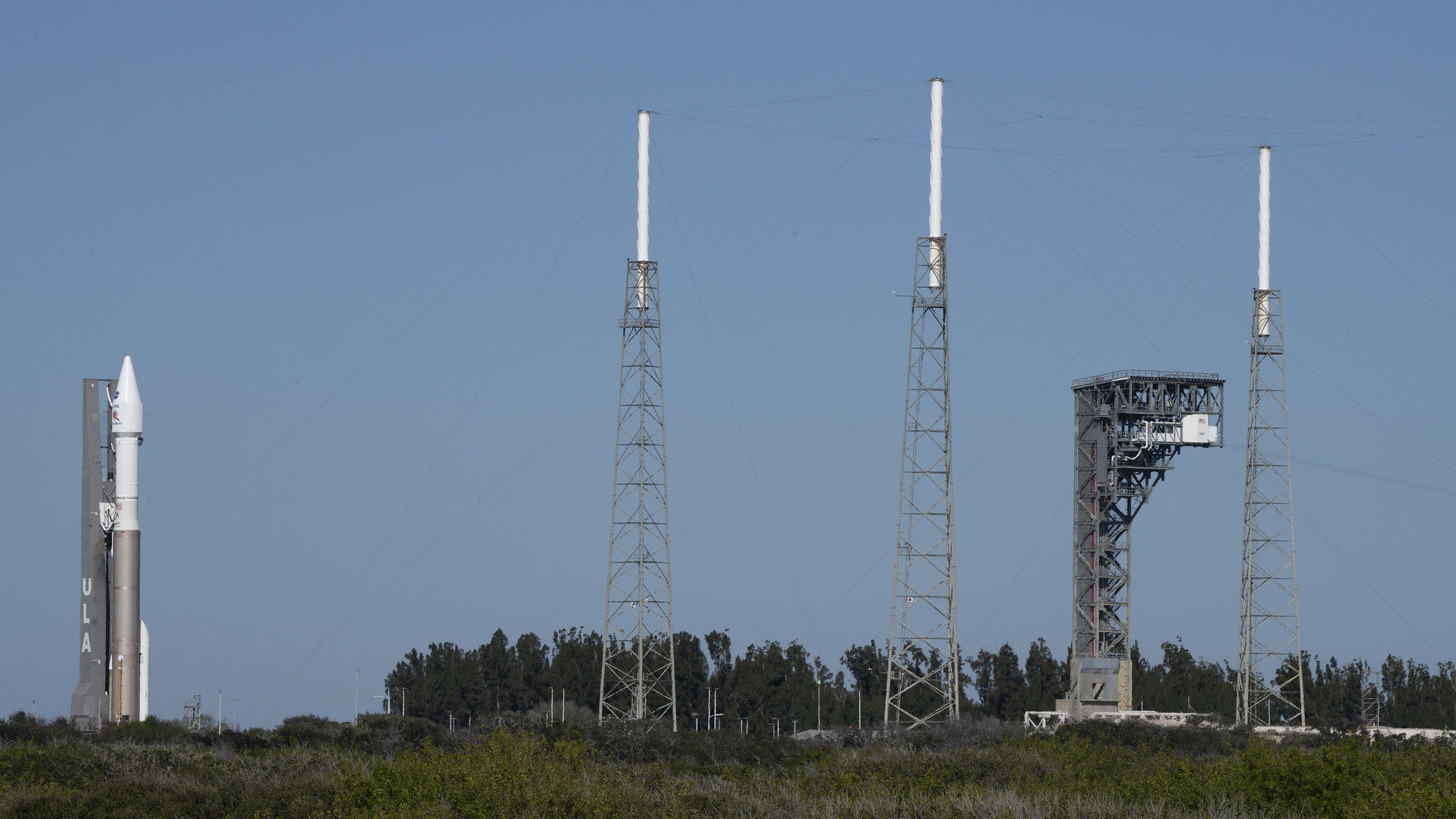
The United Launch Alliance Atlas V 411 rocket with the European Space Agency's Solar Orbiter spacecraft inside rolled out ahead of launch at Kennedy Space Center in Florida on Feb. 8, 2020.
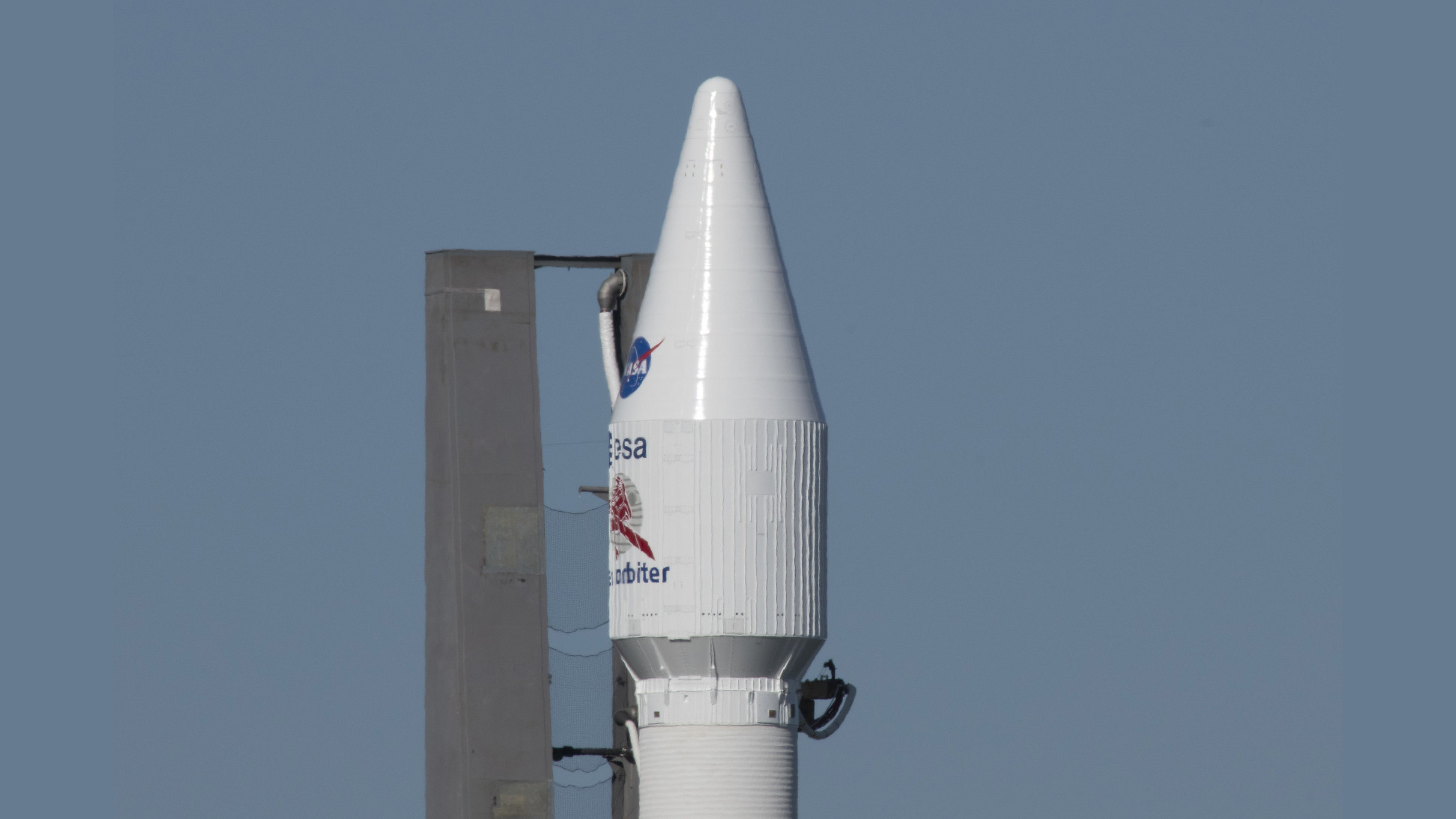
The United Launch Alliance Atlas V 411 rocket with the European Space Agency's Solar Orbiter spacecraft inside rolled out ahead of launch at Kennedy Space Center in Florida on Feb. 8, 2020.
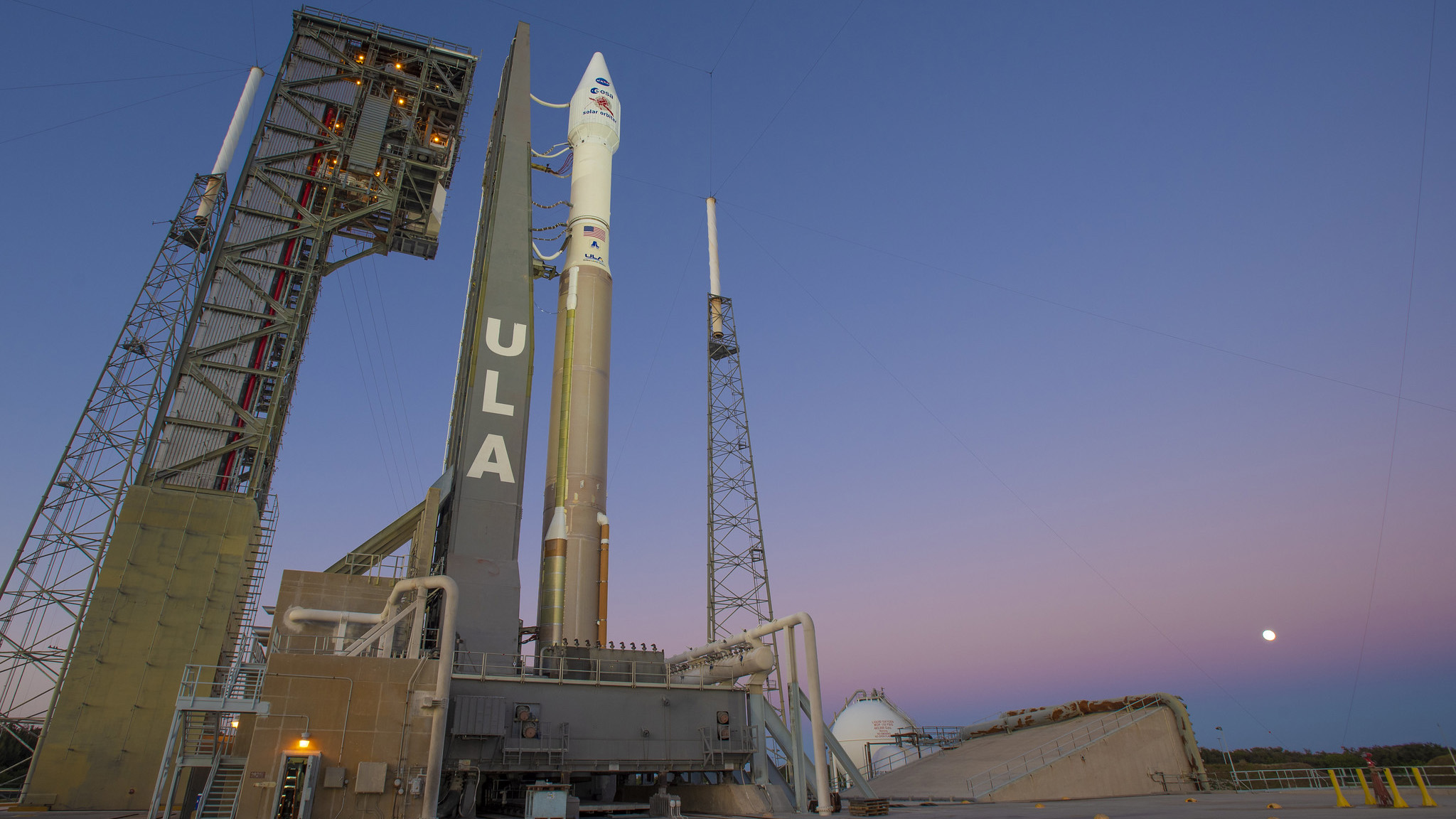
The United Launch Alliance Atlas V rocket and Solar Orbiter sit on Space Launch Complex 41 at Cape Canaveral at sunset, on Feb. 8, 2020.
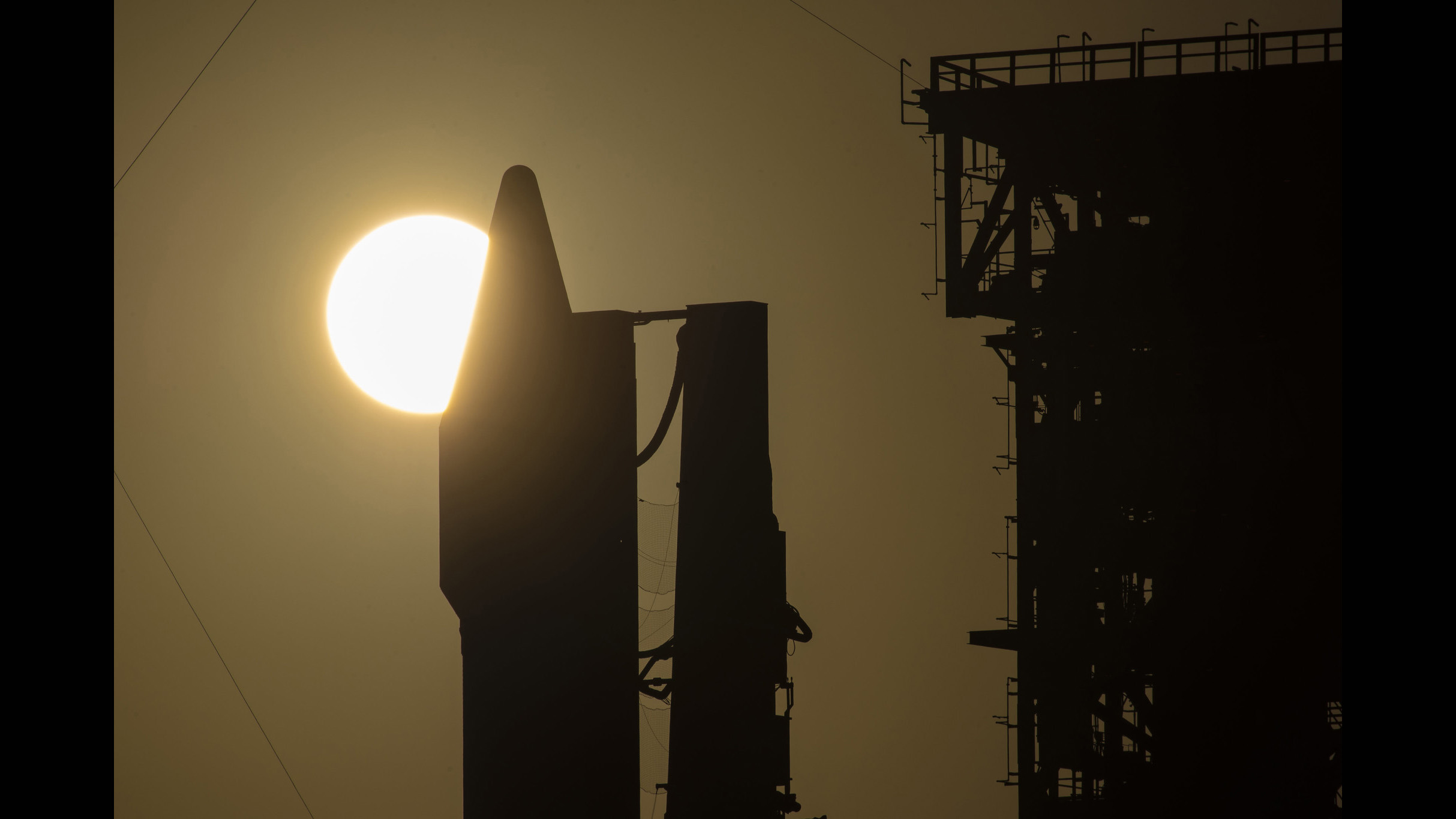
The United Launch Alliance Atlas V rocket and Solar Orbiter sit on Space Launch Complex 41 at Cape Canaveral at sunset, on Feb. 8, 2020.
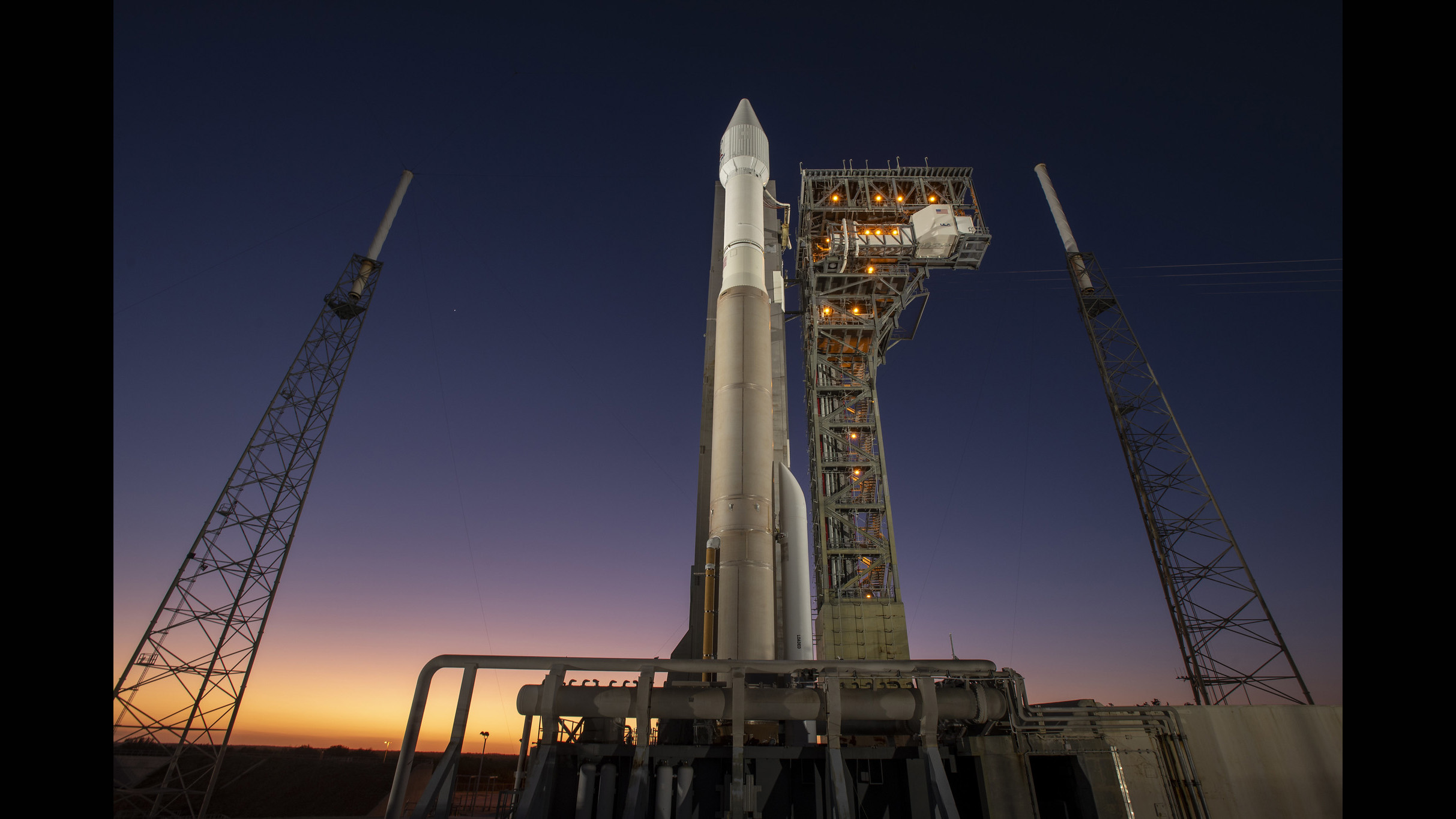
The United Launch Alliance Atlas V rocket and Solar Orbiter sit on Space Launch Complex 41 at Cape Canaveral at sunset, on Feb. 8, 2020.
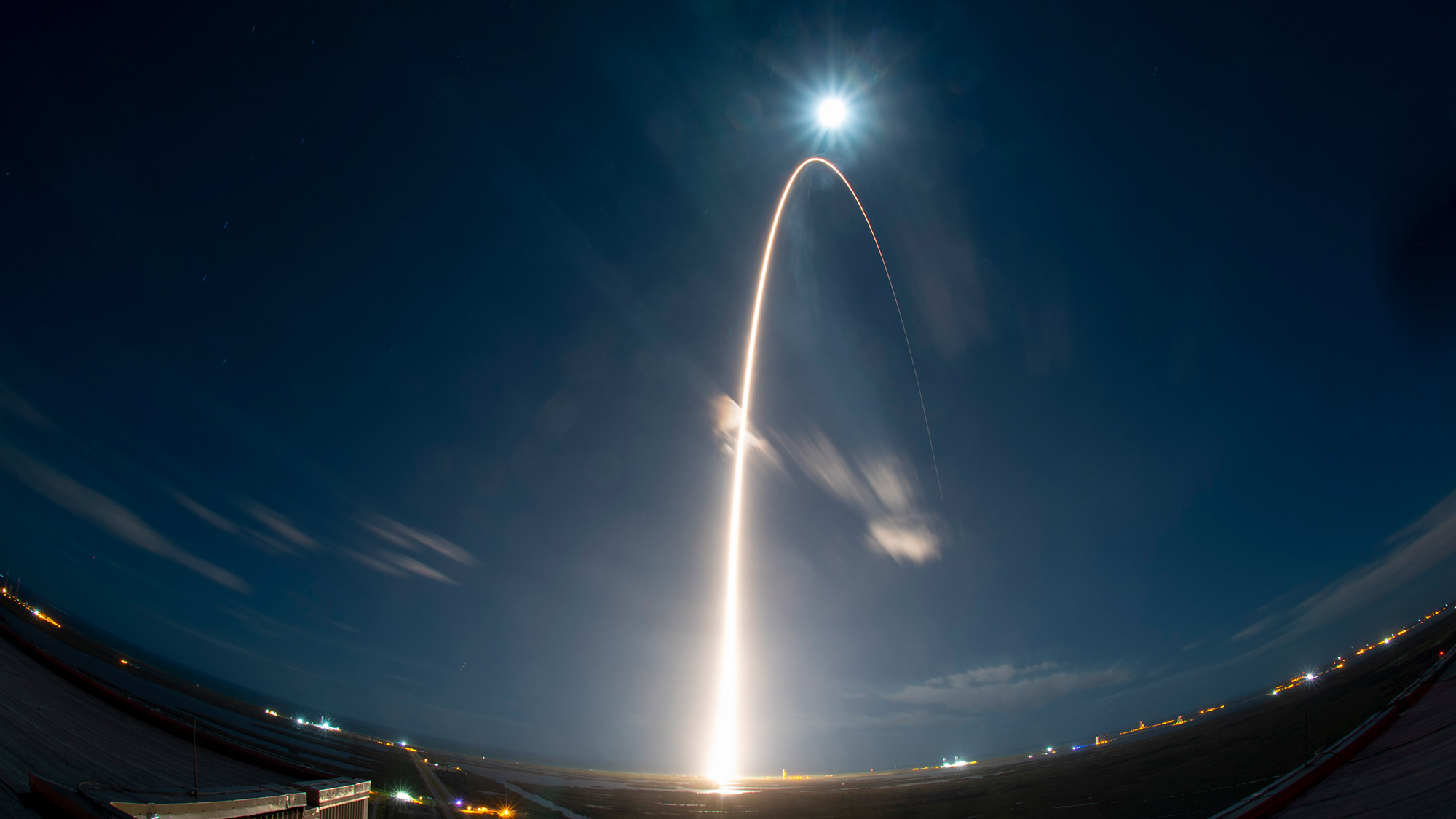
The European Space Agency's Solar Orbiter launches atop a United Launch Alliance Atlas V rocket from NASA's Kennedy Space Center in Florida on Feb. 9, 2020, at 11:03 p.m. EST (0403 GMT on Feb. 10).
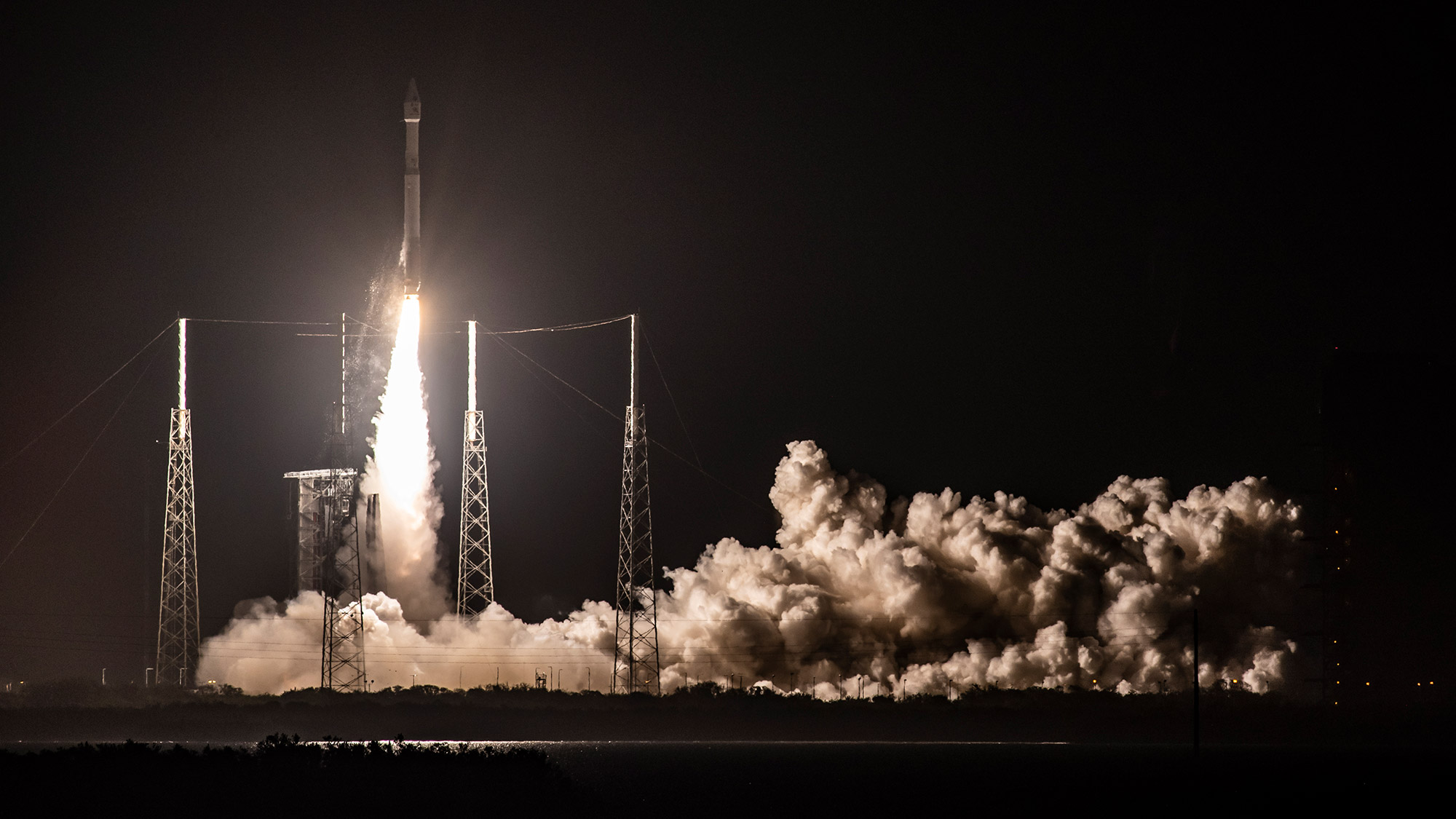
The European Space Agency's Solar Orbiter launches atop a United Launch Alliance Atlas V rocket from NASA's Kennedy Space Center in Florida on Feb. 9, 2020, at 11:03 p.m. EST (0403 GMT on Feb. 10).
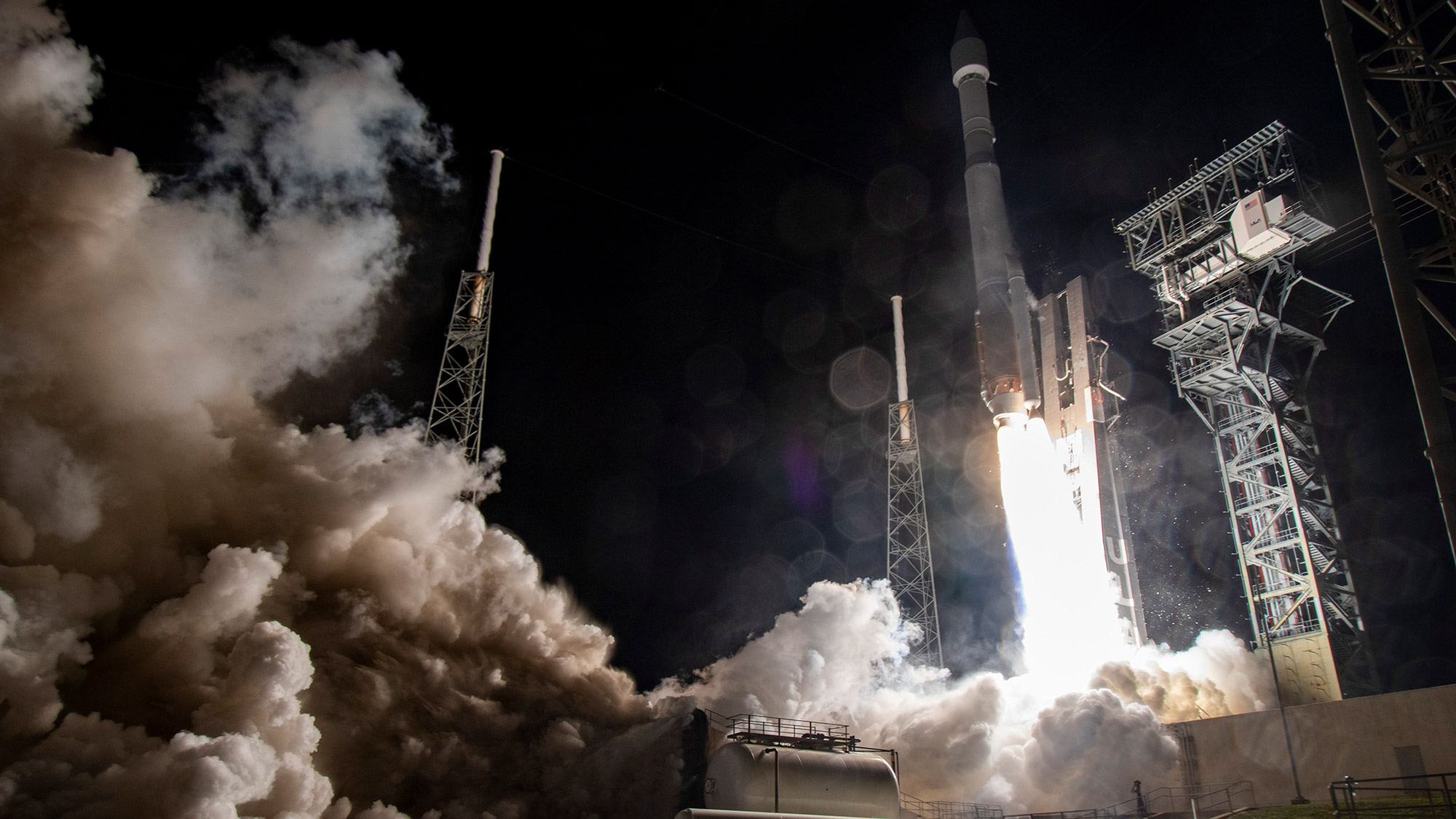
The European Space Agency's Solar Orbiter launches atop a United Launch Alliance Atlas V rocket from NASA's Kennedy Space Center in Florida on Feb. 9, 2020, at 11:03 p.m. EST (0403 GMT on Feb. 10).
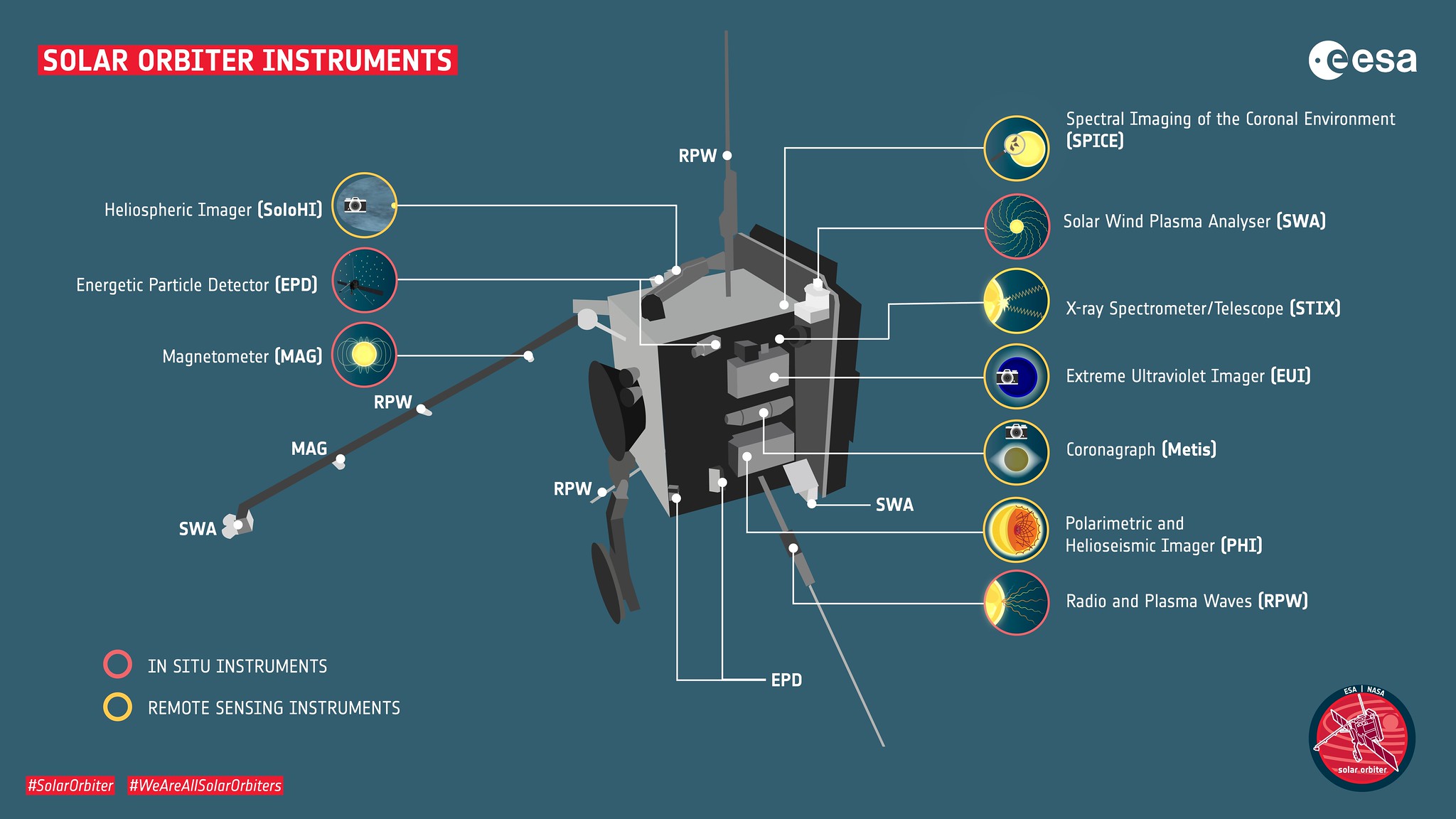
Solar Orbiter has a suite of ten science instruments that will study the sun. The in situ instruments measure the conditions around the spacecraft itself. The remote-sensing instruments measure what is happening at large distances away.
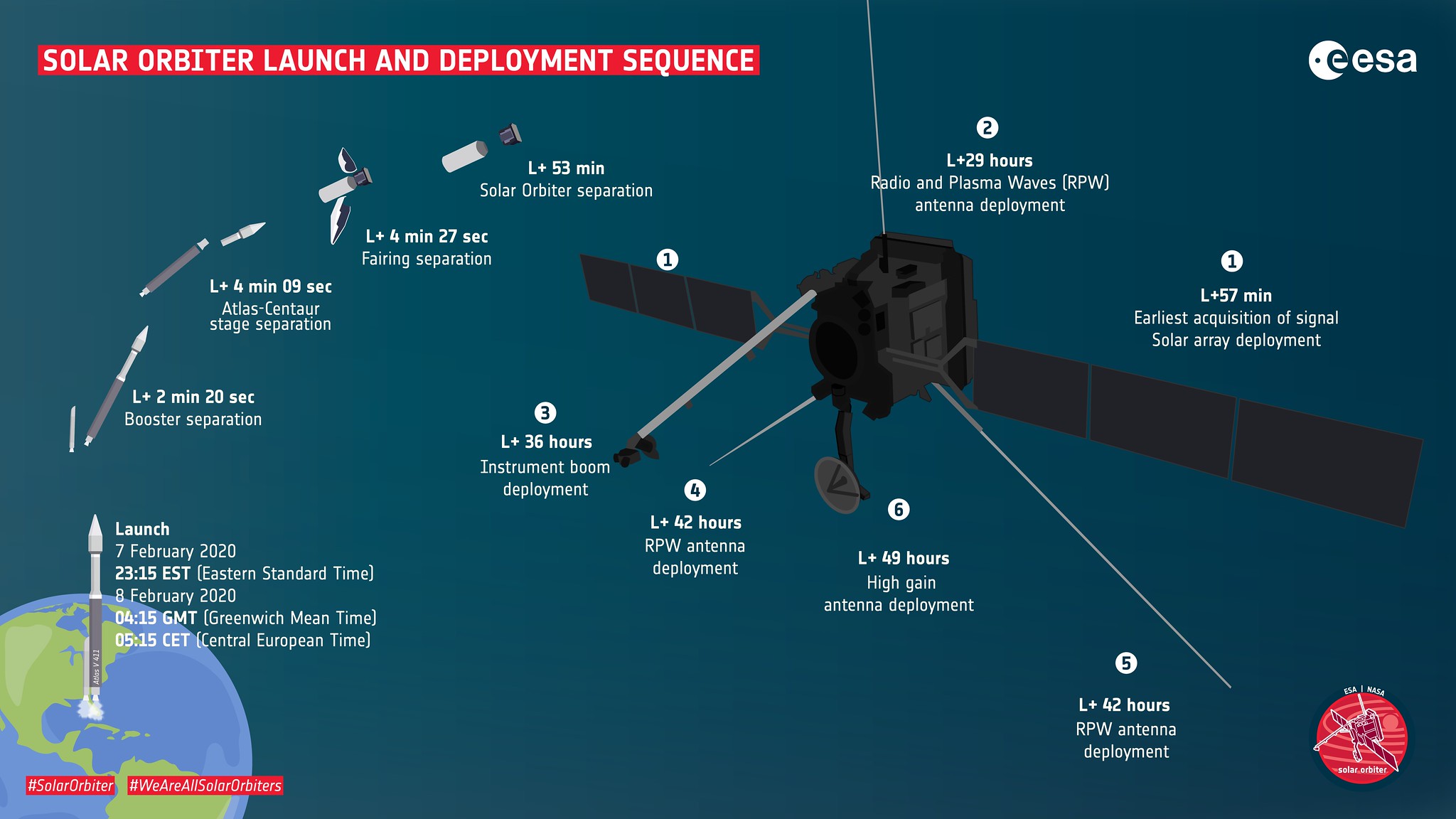
The Solar Orbiter spacecraft will separate from the launcher around 53 minutes after launch, followed by acquisition of spacecraft signal. In the days after launch, the instrument boom and antennas will be deployed.

During the initial cruise phase, which lasts until November 2021, Solar Orbiter will perform two gravity-assist maneuvers around Venus and one around Earth to alter the spacecraft's trajectory, guiding it towards the innermost regions of the solar system. The first close solar pass will take place in 2022 at around a third of Earth's distance from the sun.
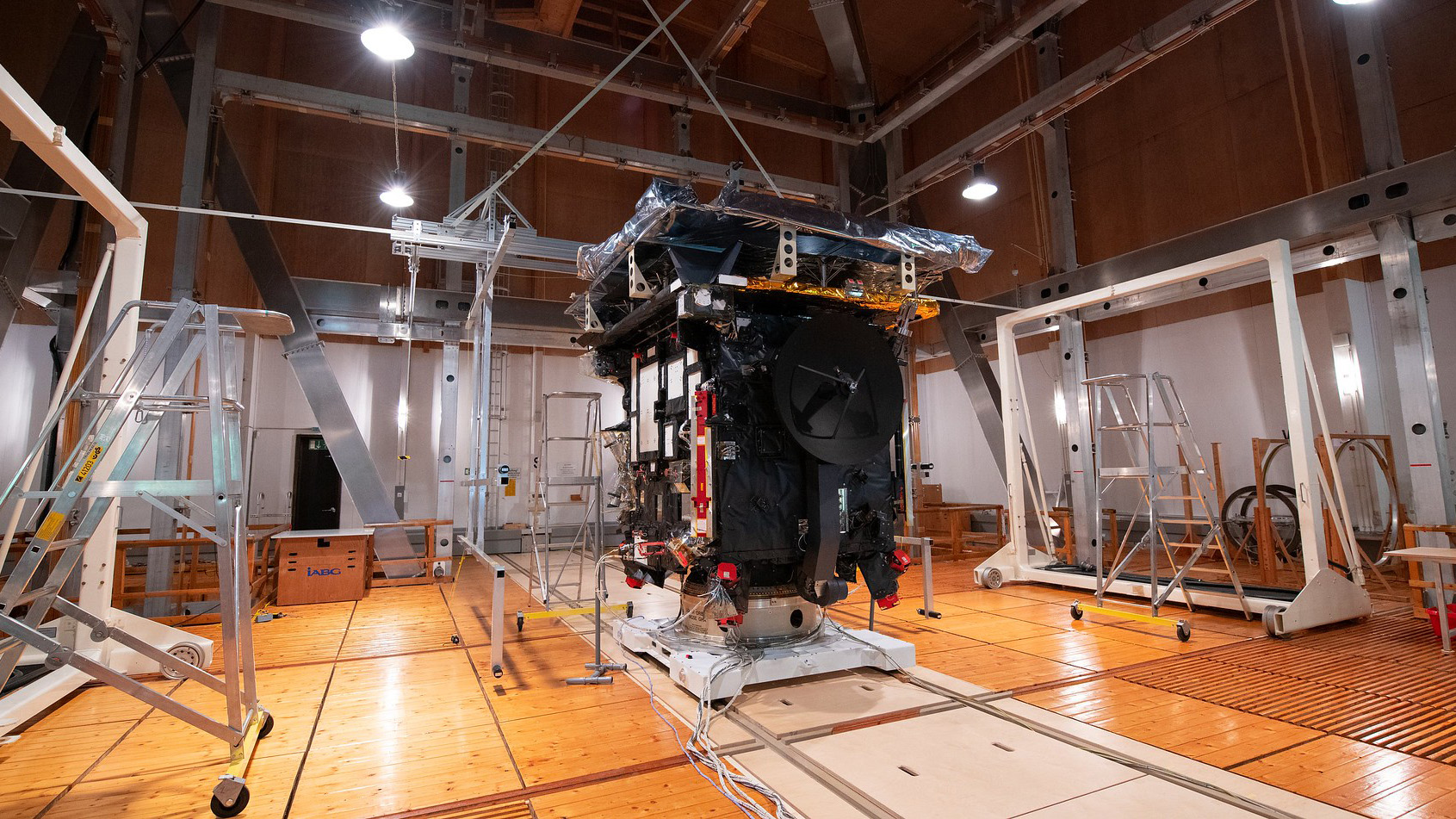
As part of its testing campaign to prepare for launch, the European Space Agency's Solar Orbiter spacecraft underwent a special set of tests in a magnetic field simulation facility near the IABG premises in Ottobrunn, Germany.
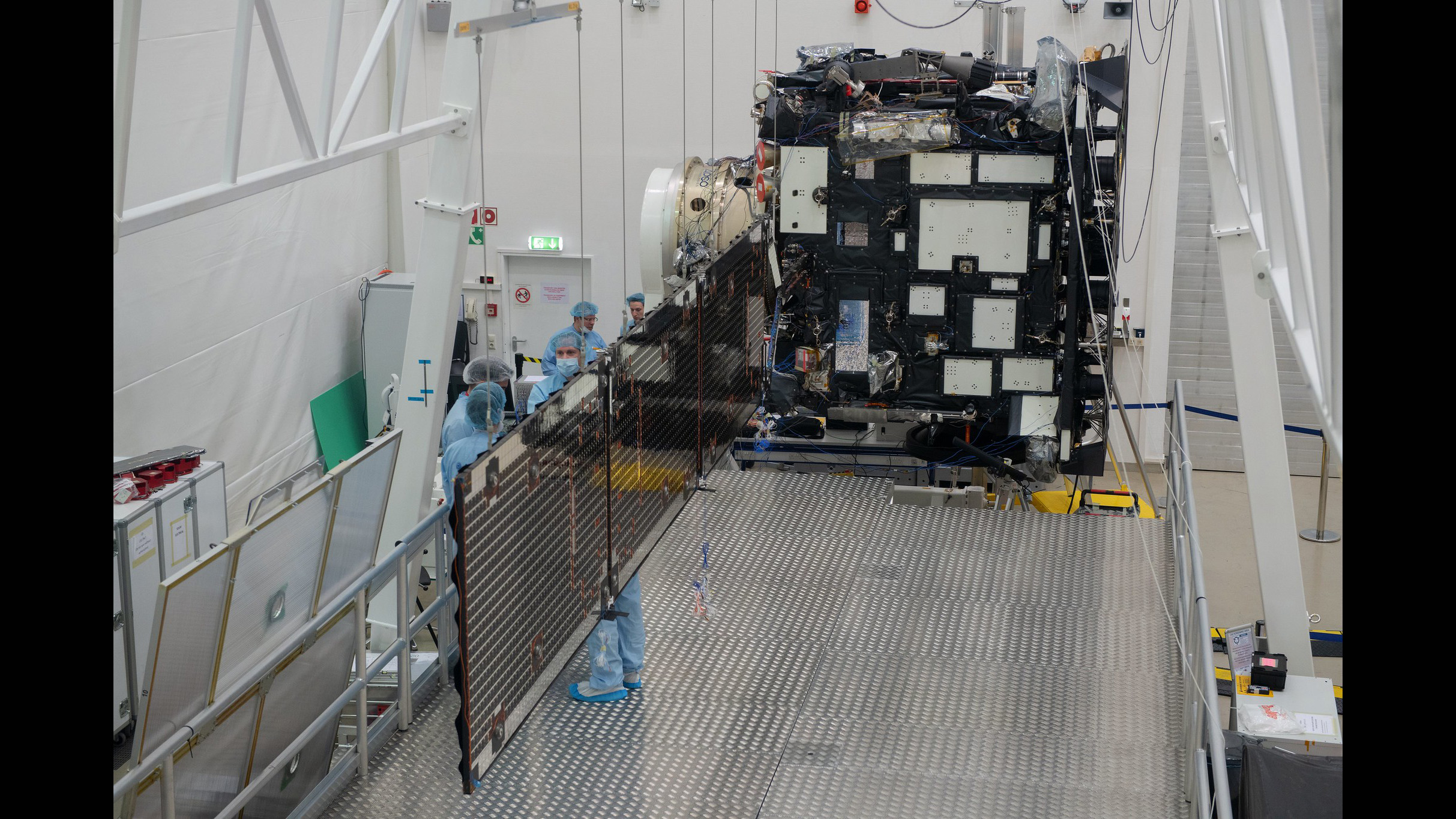
The European Space Agency's Solar Orbiter undergoes a solar array deployment test at the IABG facilities in Ottobrunn, Germany on March 21, 2019. The solar panels are suspended from above to simulate the weightlessness of space.
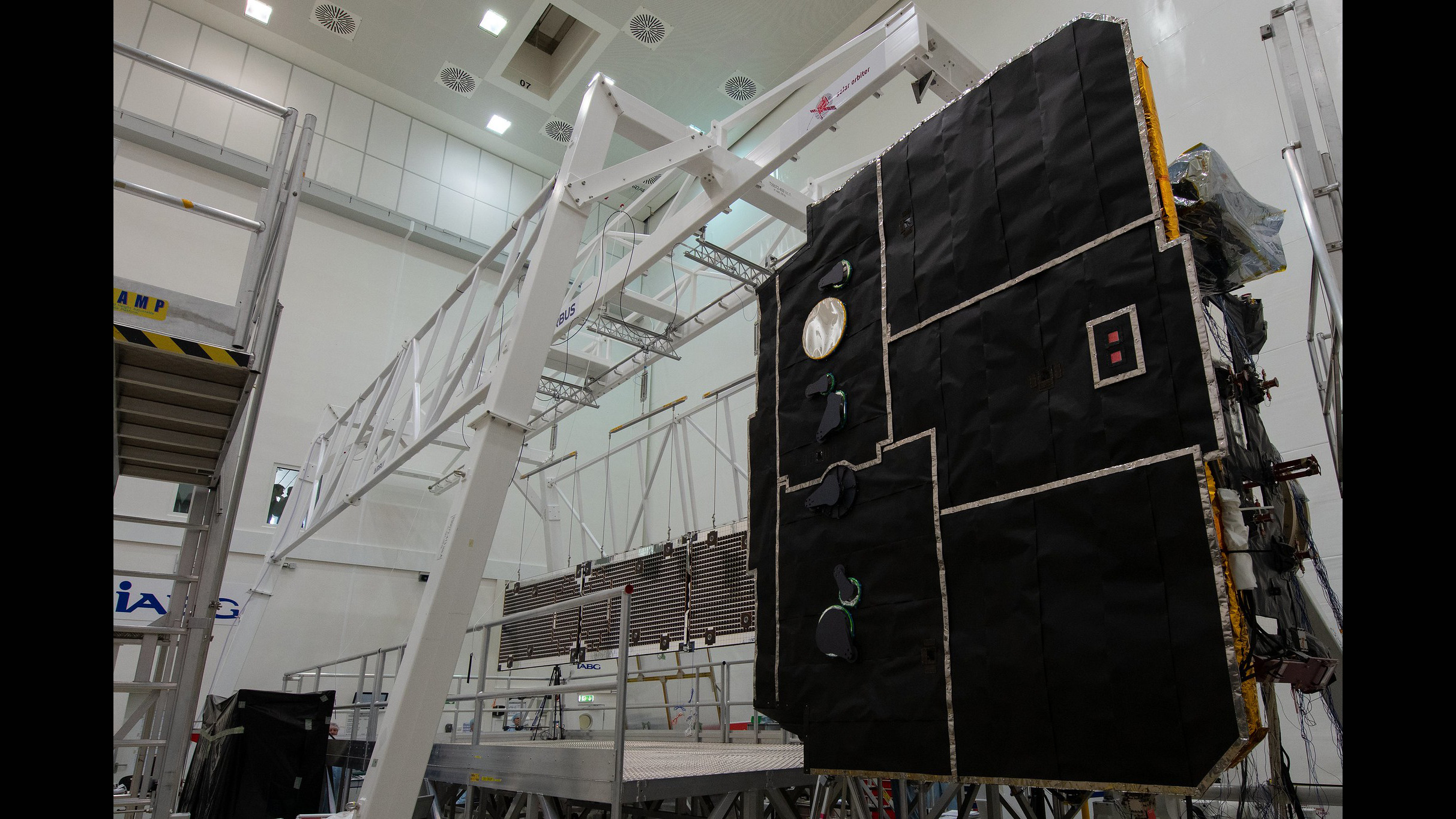
The European Space Agency's Solar Orbiter undergoes a solar array deployment test at the IABG facilities in Ottobrunn, Germany on March 21, 2019. The solar panels are suspended from above to simulate the weightlessness of space.
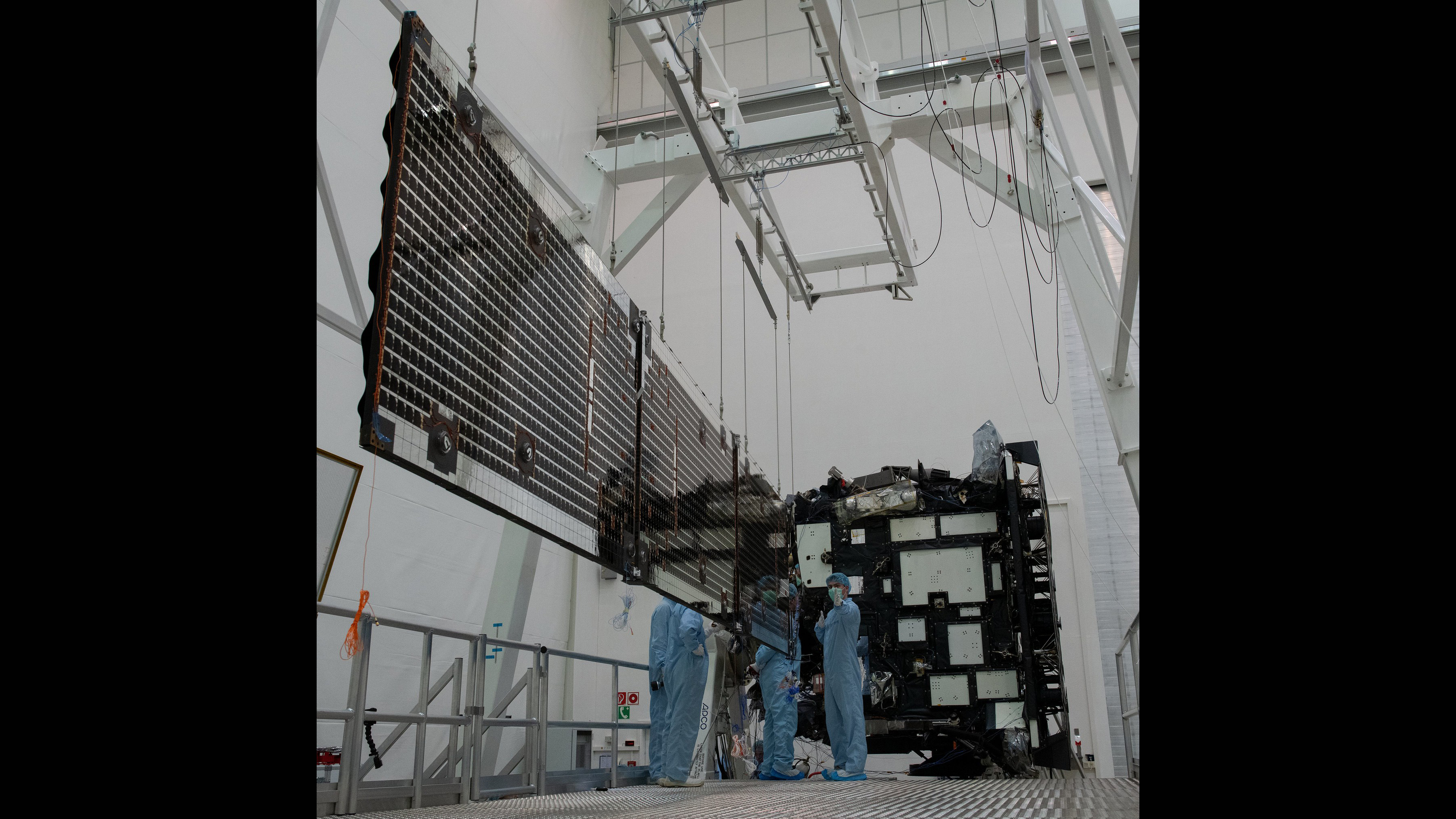
The European Space Agency's Solar Orbiter undergoes a solar array deployment test at the IABG facilities in Ottobrunn, Germany on March 21, 2019. The solar panels are suspended from above to simulate the weightlessness of space.
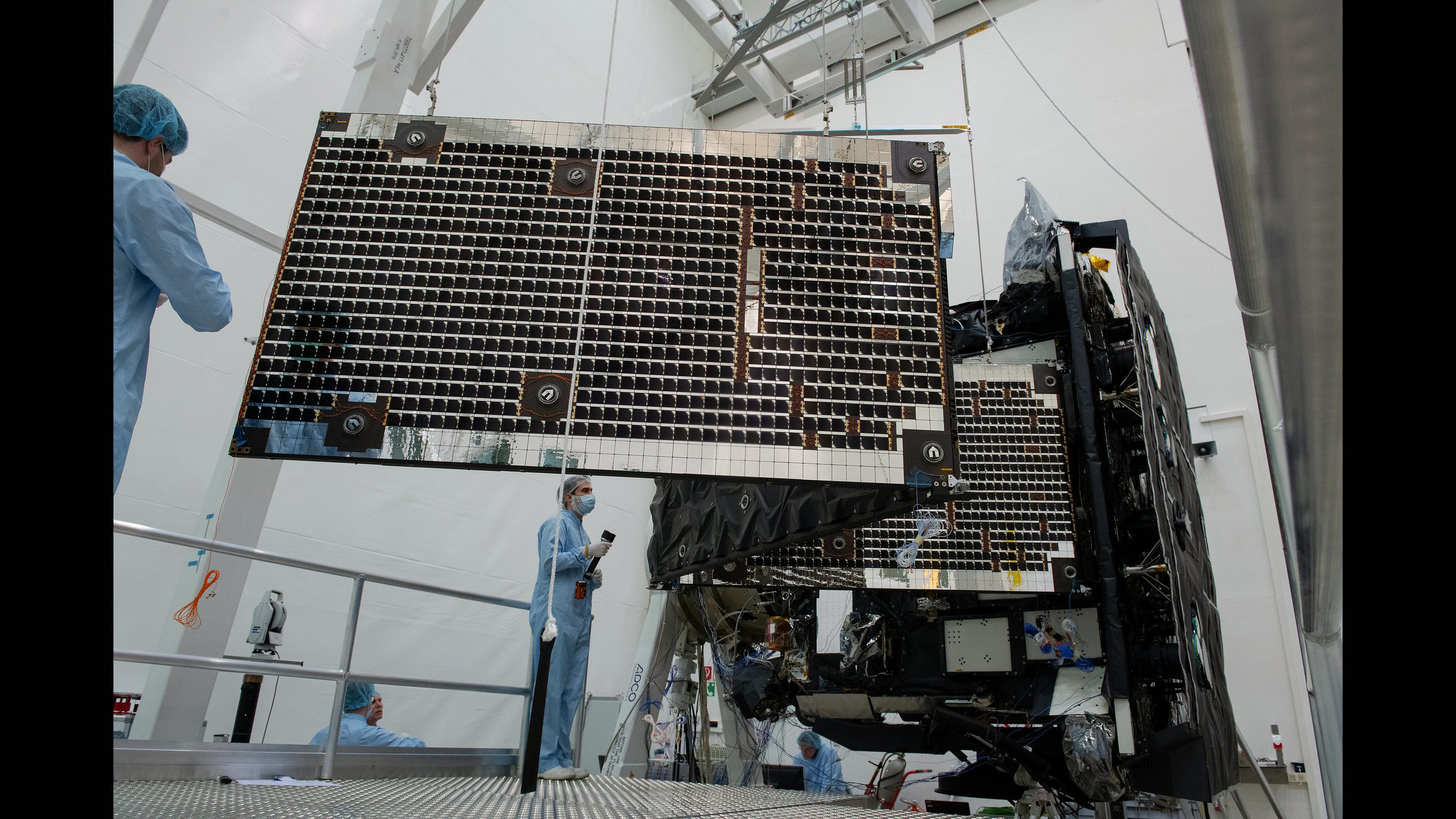
This image captures the scene part way through a solar array deployment test at the IABG facilities in Ottobrunn, Germany. Fully extended, the tip of the array stretches 27 feet (8.2 meters) from the spacecraft body.
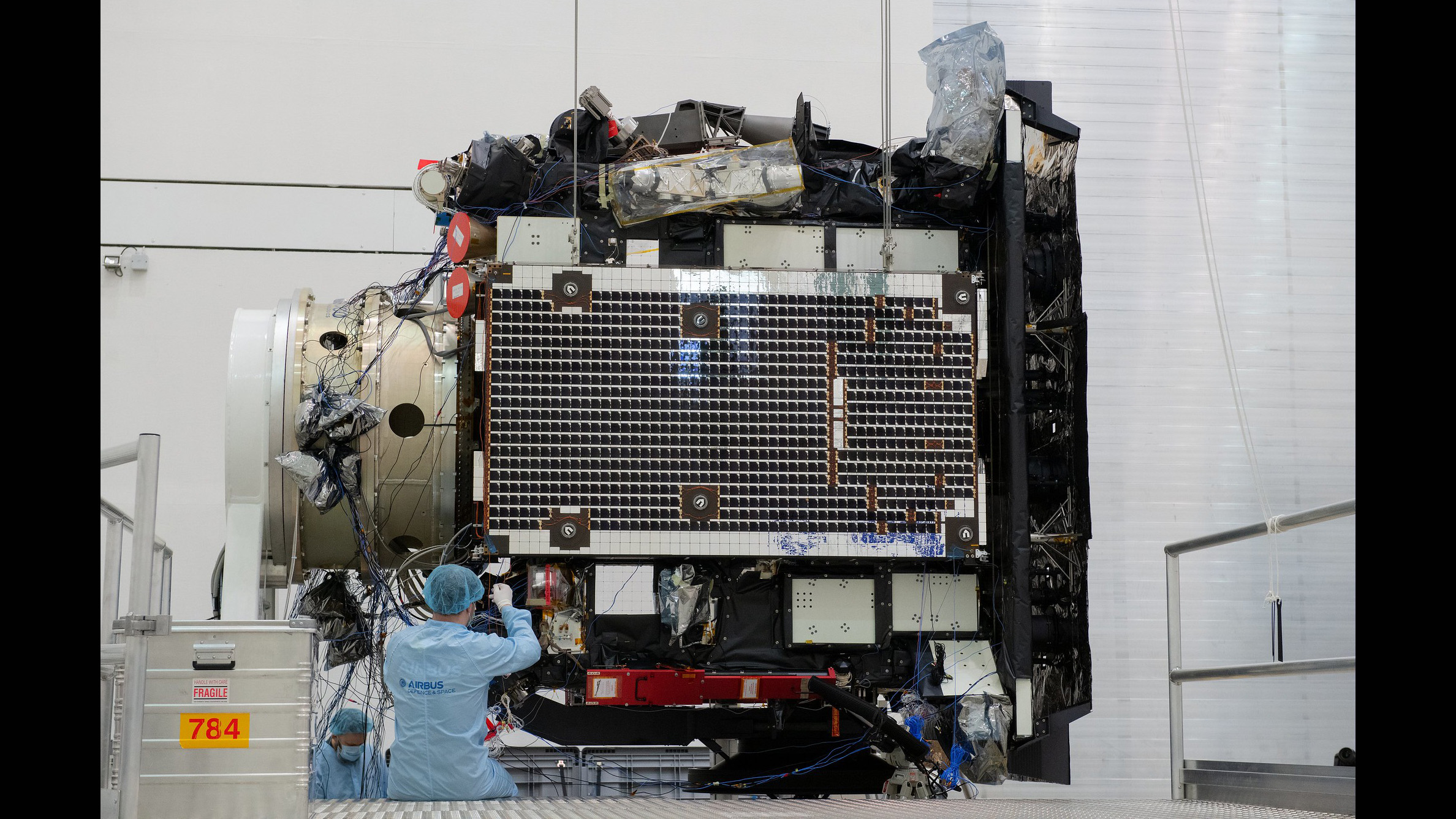
The European Space Agency's Solar Orbiter undergoing a solar array deployment test at the IABG facilities in Ottobrunn, Germany on March 21, 2019.
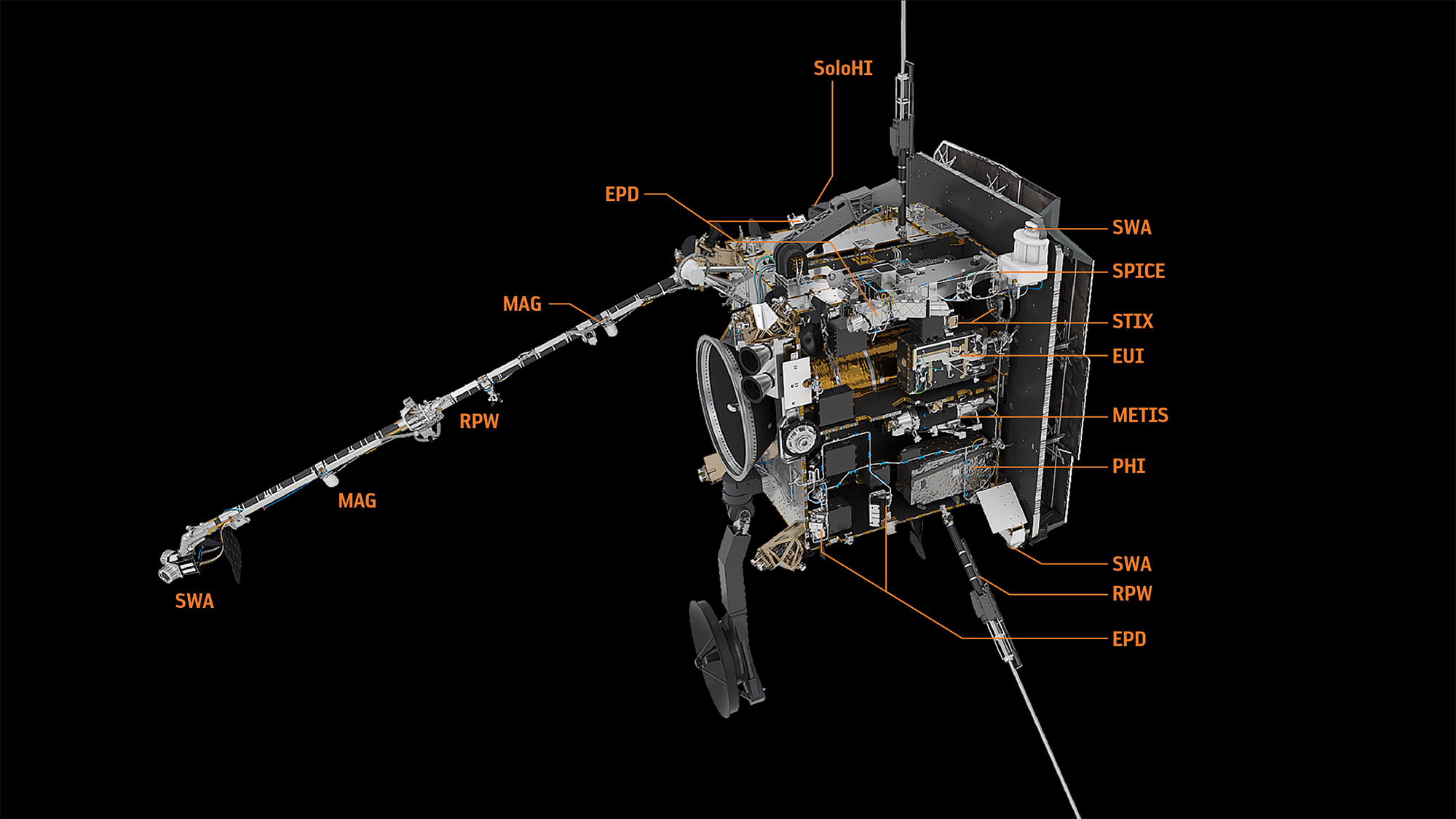
This diagram shows Solar Orbiter's scientific instruments.
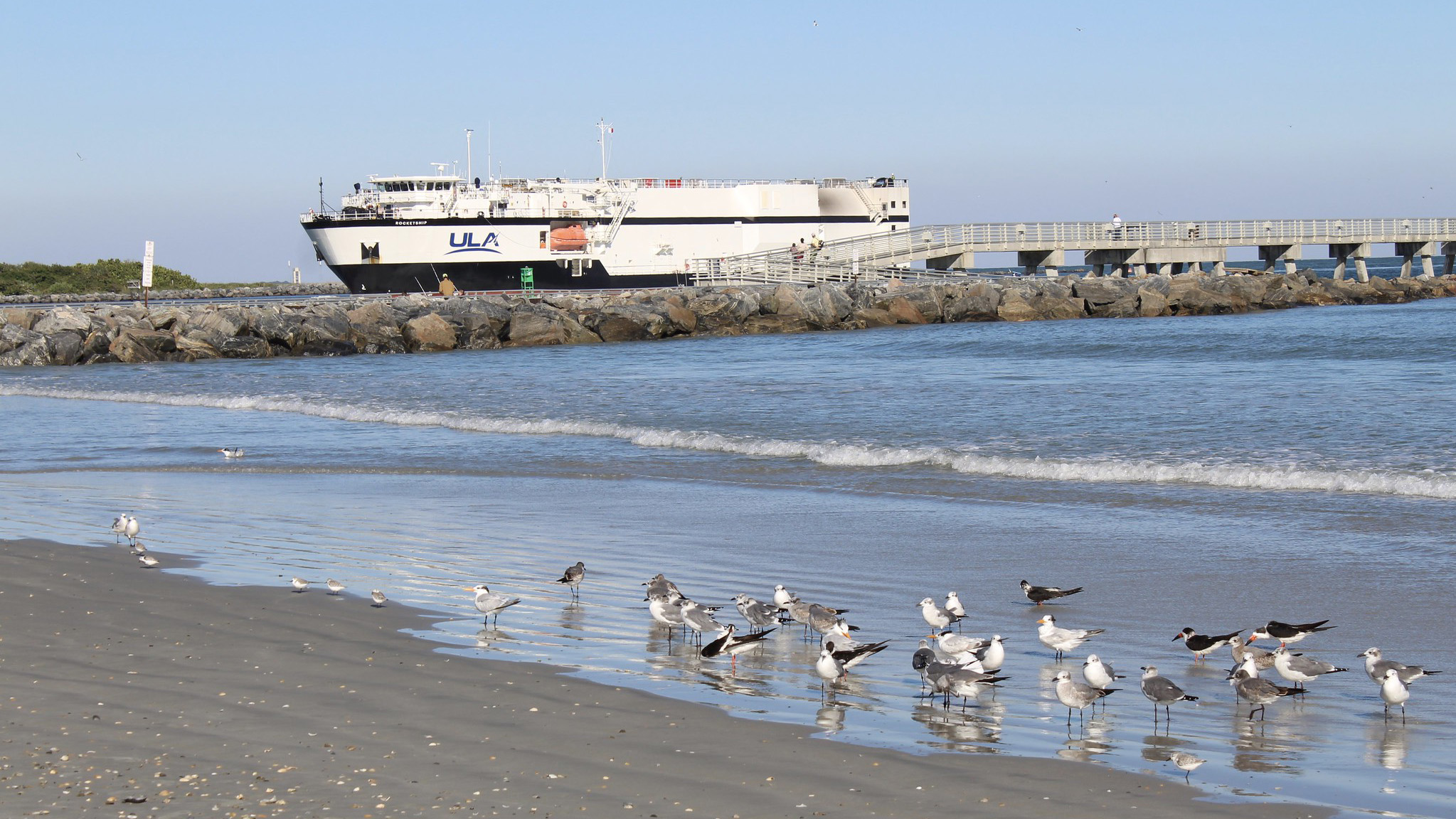
The United Launch Alliance's "RocketShip" barge arrives at Port Canaveral, Florida to deliver the Atlas V first stage and Centaur upper stage from ULA's factory in Decatur, Alabama on Nov. 20, 2019.
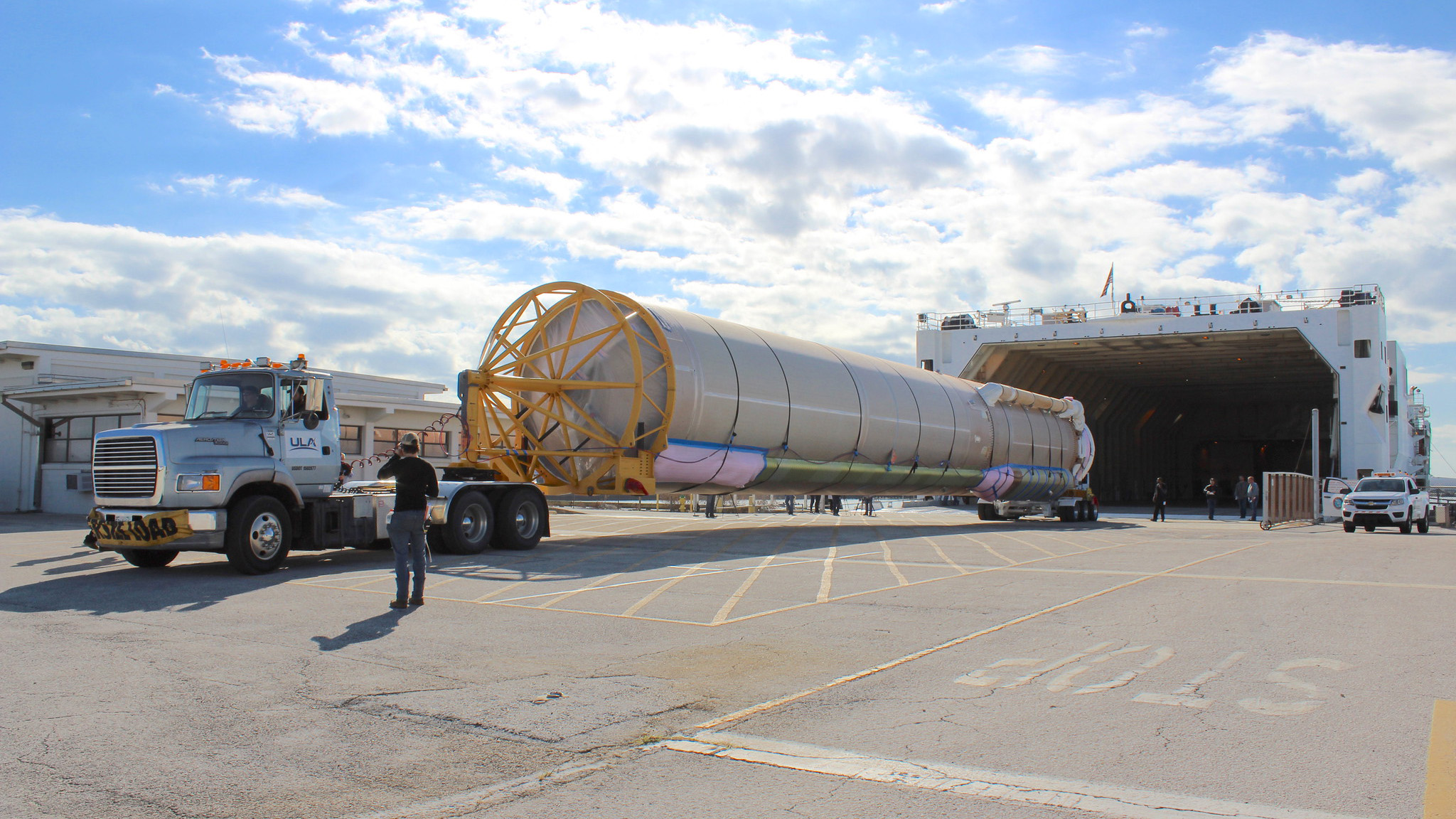
A United Launch Alliance Atlas V first stage booster is offloaded from the RocketShip transport vessel at Cape Canaveral Air Force Station on Nov. 21, 2019 to undergo preparations to launch Solar Orbiter on its journey to study the sun.
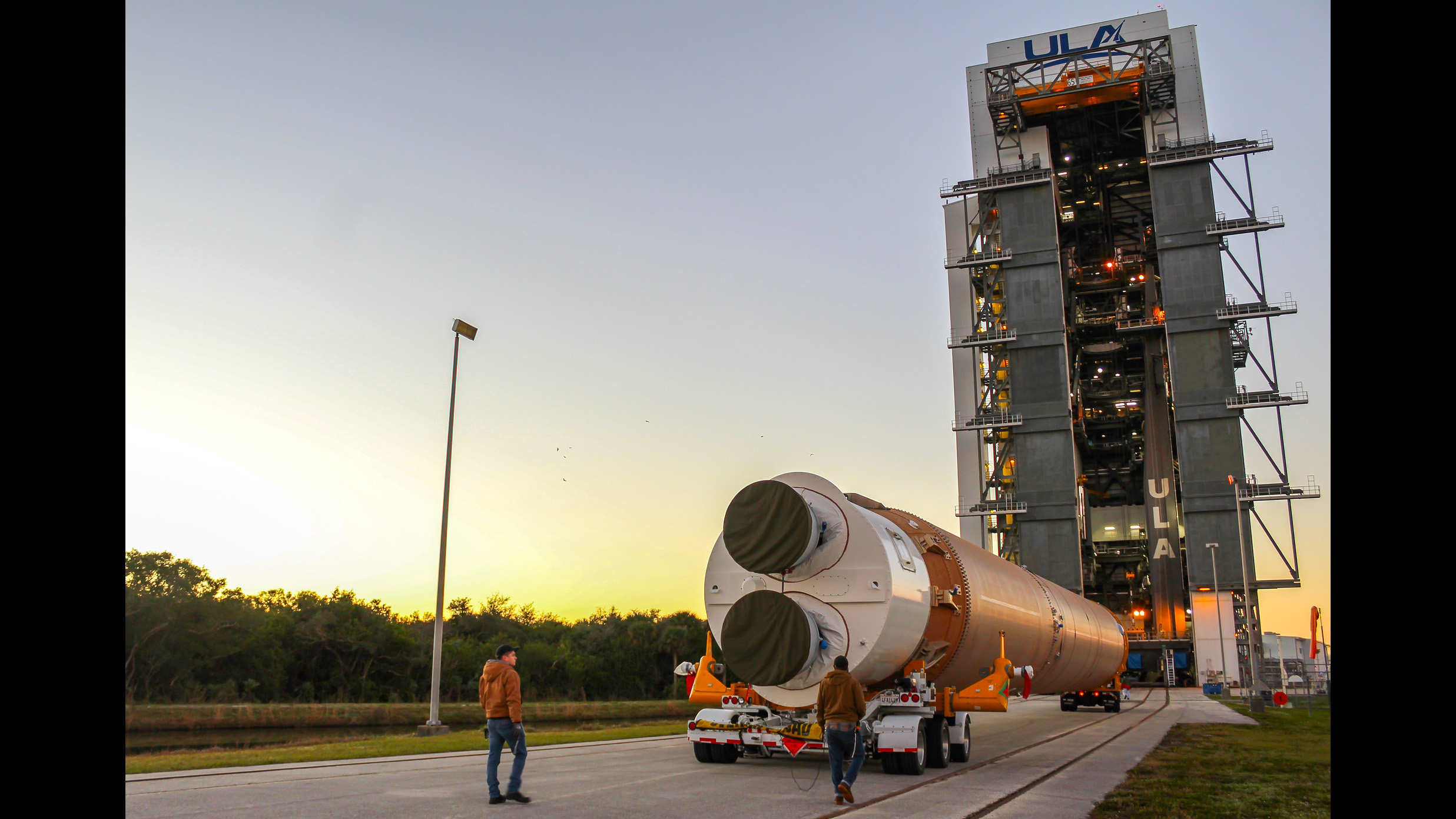
United Launch Alliance hoists its Atlas V onto the mobile launch platform at the Vertical Integration Facility at Space Launch Complex 41 at Cape Canaveral Air Force Station in Florida, to begin preparations to launch the Solar Orbiter spacecraft for the European Space Agency and NASA.
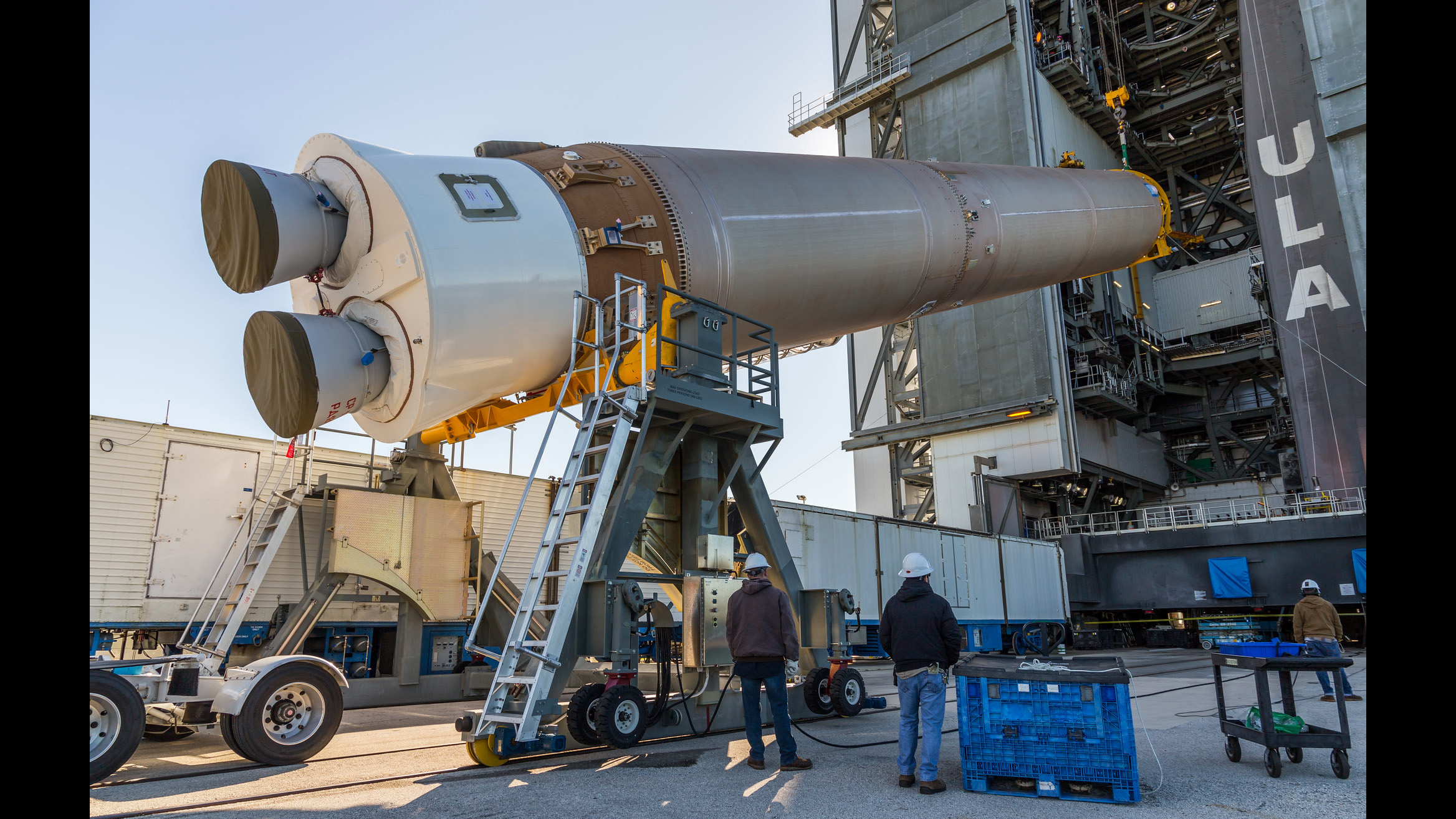
United Launch Alliance hoists its Atlas V onto the mobile launch platform at the Vertical Integration Facility at Space Launch Complex 41 at Cape Canaveral Air Force Station in Florida, to begin preparations to launch the Solar Orbiter spacecraft for the European Space Agency and NASA.
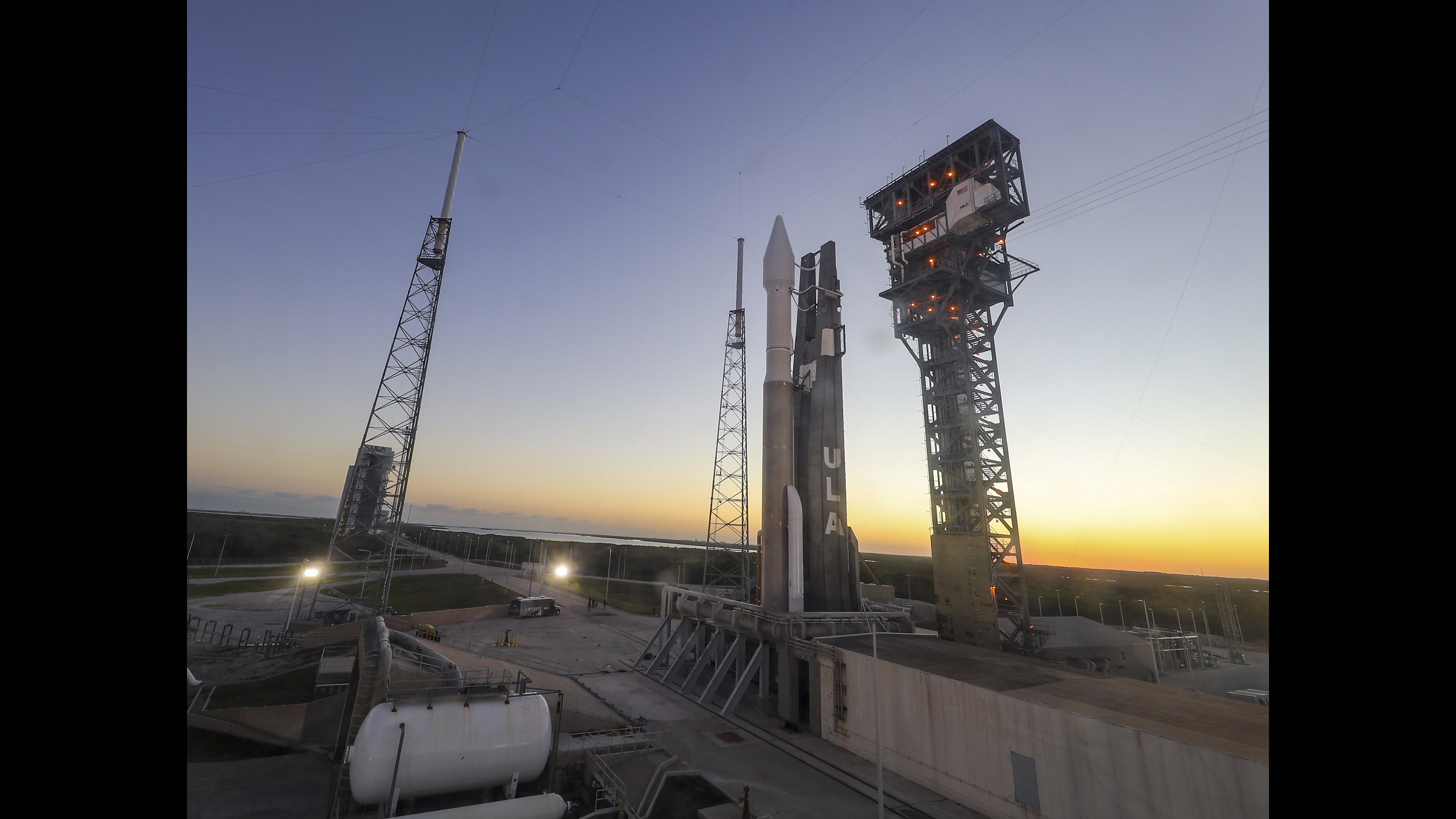
The United Launch Alliance Atlas V rocket and Solar Orbiter sit on Space Launch Complex 41 at Cape Canaveral at sunset, on Feb. 8, 2020.
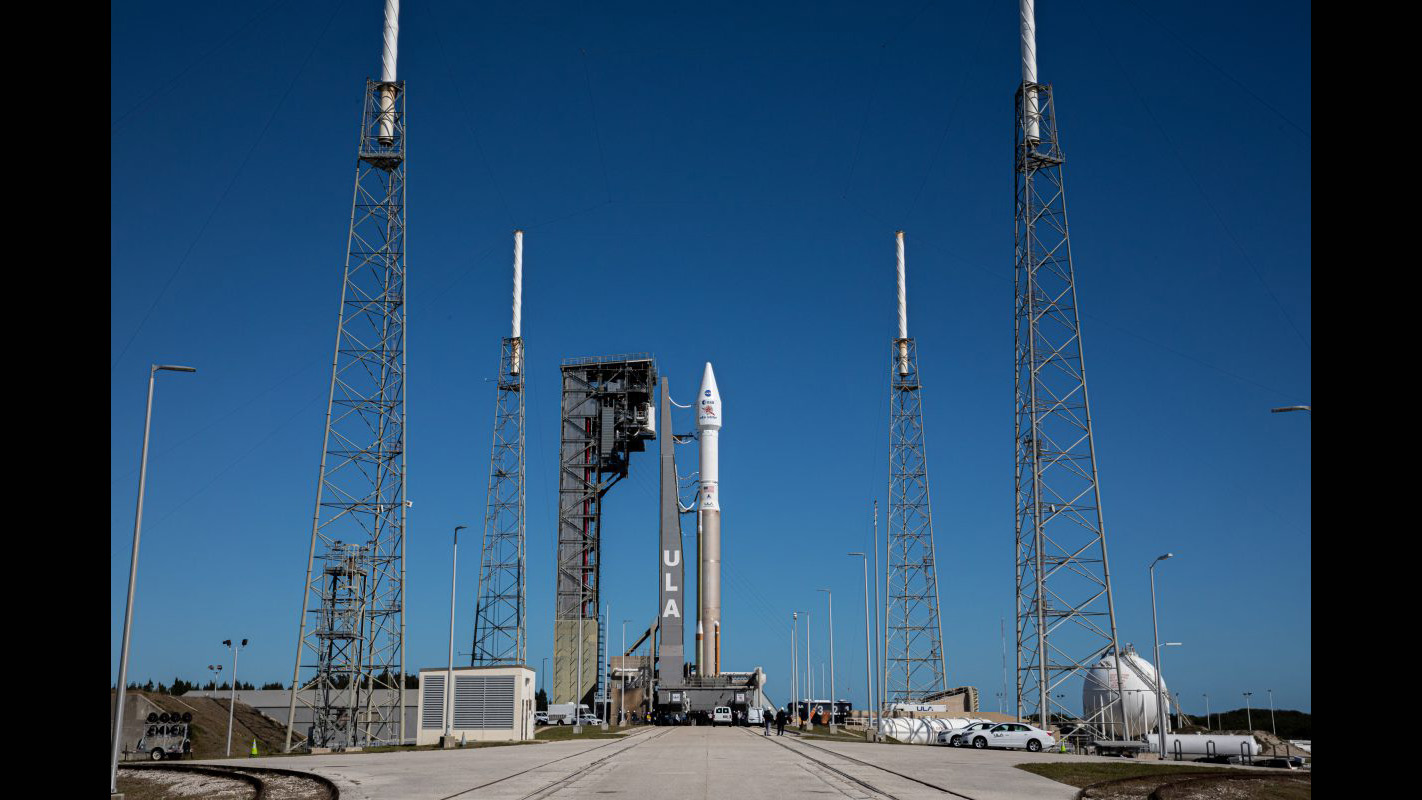
The United Launch Alliance Atlas V rocket with the Solar Orbiter spacecraft arrives at the launch pad at Space Launch Complex 41 on Cape Canaveral Air Force Station in Florida on Feb. 8, 2020.
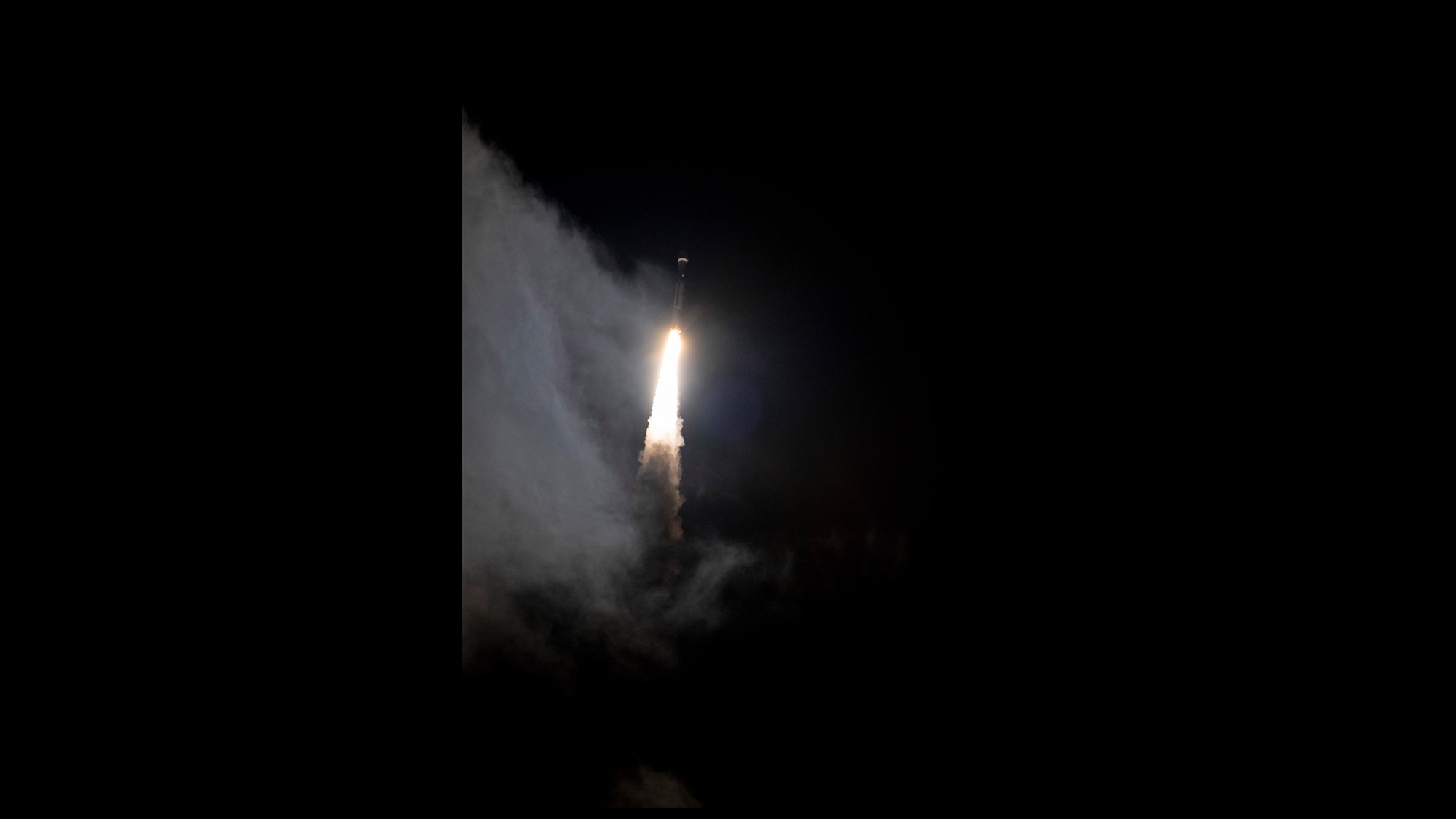
The European Space Agency's Solar Orbiter launches atop a United Launch Alliance Atlas V rocket from NASA's Kennedy Space Center in Florida on Feb. 9, 2020, at 11:03 p.m. EST (0403 GMT on Feb. 10).
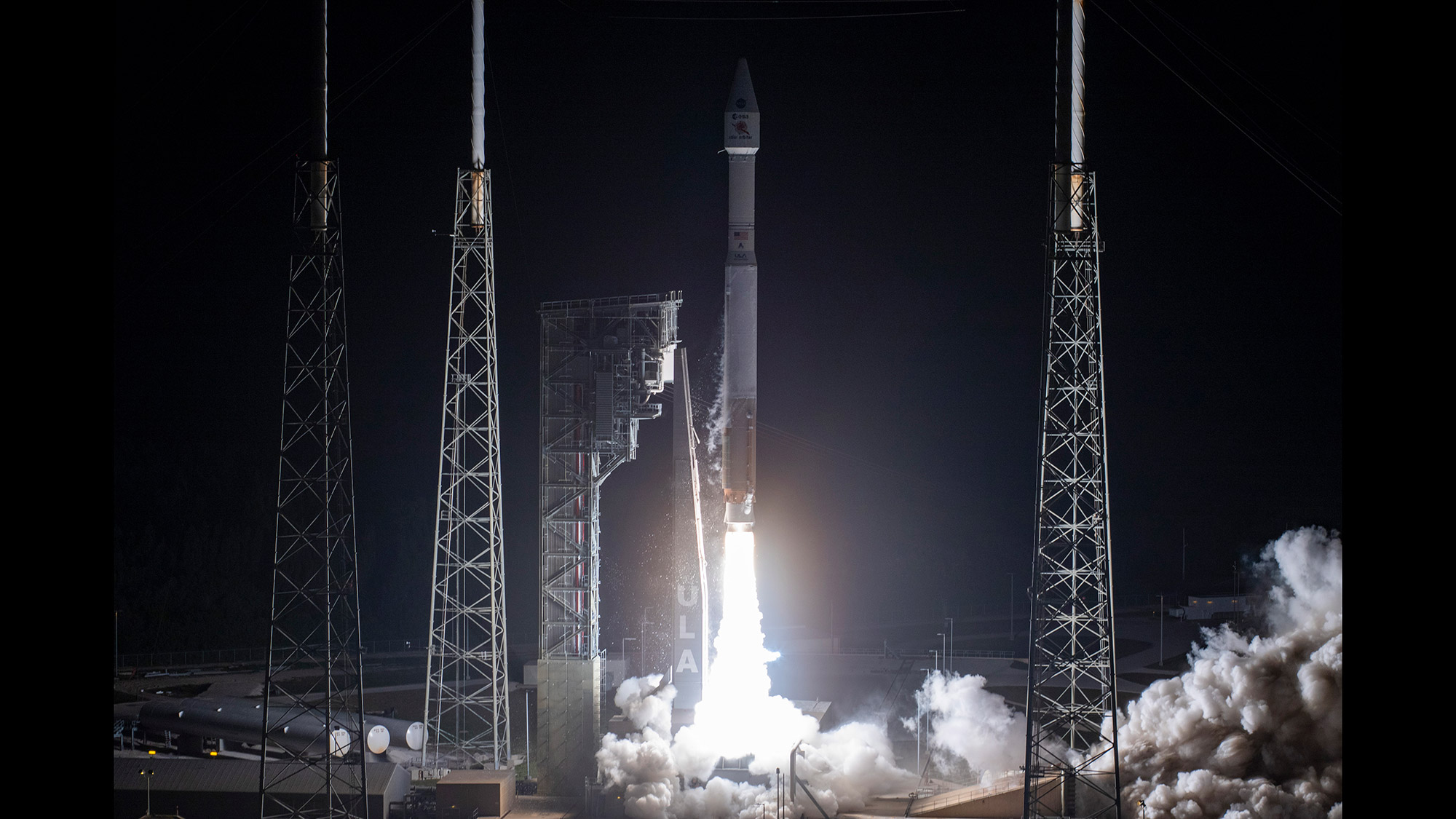
The European Space Agency's Solar Orbiter launches atop a United Launch Alliance Atlas V rocket from NASA's Kennedy Space Center in Florida on Feb. 9, 2020, at 11:03 p.m. EST (0403 GMT on Feb. 10).
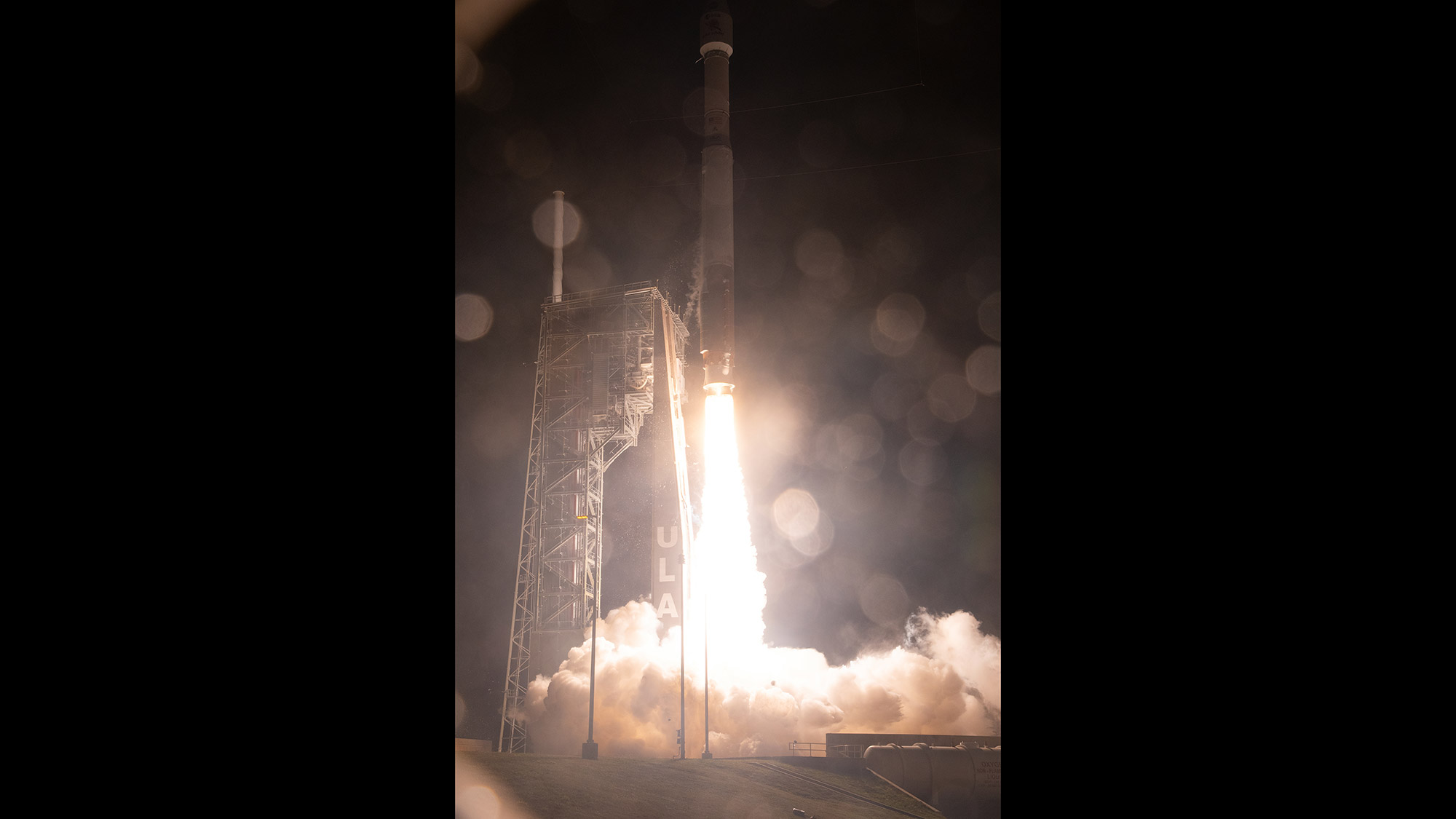
The European Space Agency's Solar Orbiter launches atop a United Launch Alliance Atlas V rocket from NASA's Kennedy Space Center in Florida on Feb. 9, 2020, at 11:03 p.m. EST (0403 GMT on Feb. 10).

Space.com is the premier source of space exploration, innovation and astronomy news, chronicling (and celebrating) humanity's ongoing expansion across the final frontier. Originally founded in 1999, Space.com is, and always has been, the passion of writers and editors who are space fans and also trained journalists. Our current news team consists of Editor-in-Chief Tariq Malik; Editor Hanneke Weitering, Senior Space Writer Mike Wall; Senior Writer Meghan Bartels; Senior Writer Chelsea Gohd, Senior Writer Tereza Pultarova and Staff Writer Alexander Cox, focusing on e-commerce. Senior Producer Steve Spaleta oversees our space videos, with Diana Whitcroft as our Social Media Editor.









